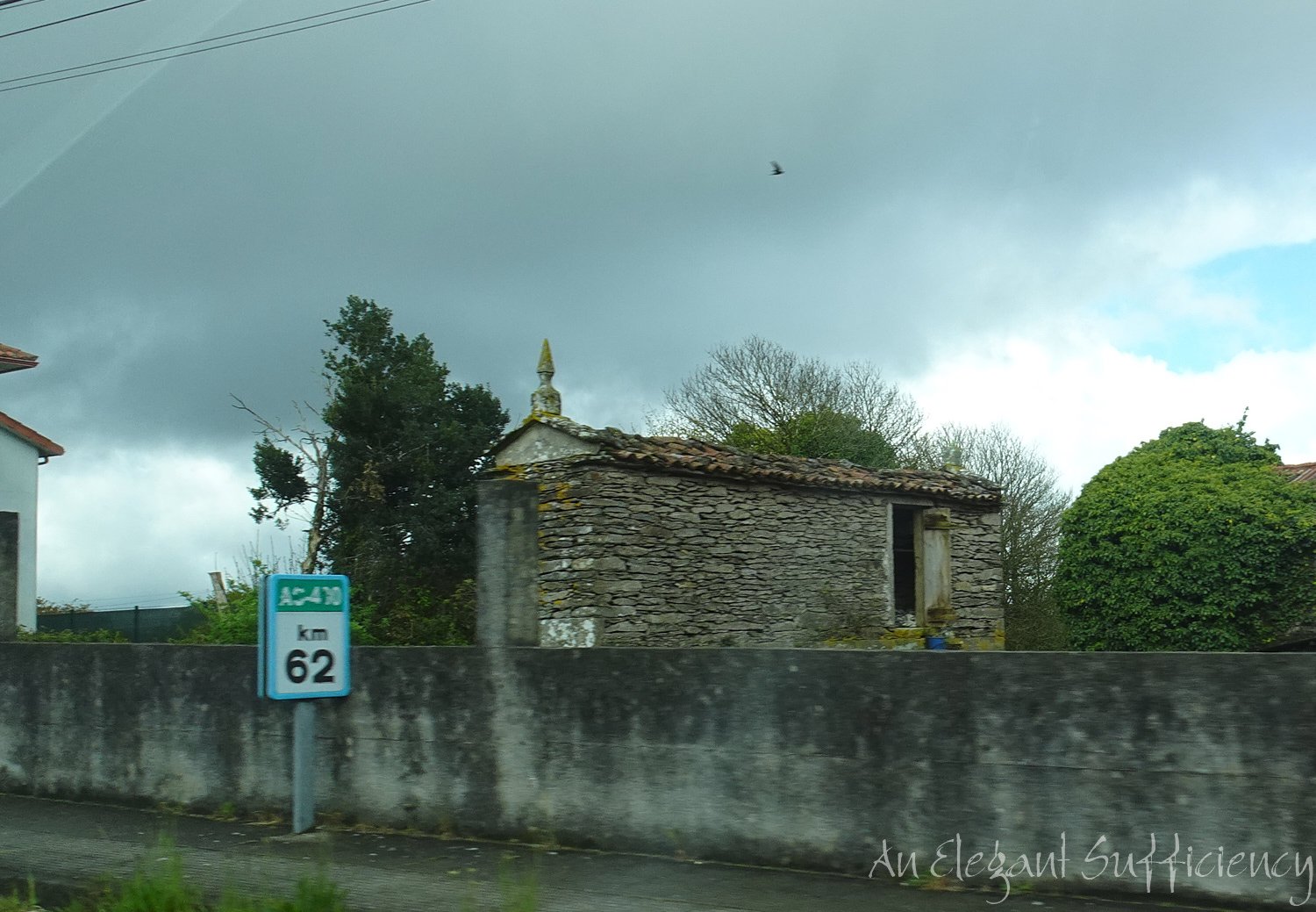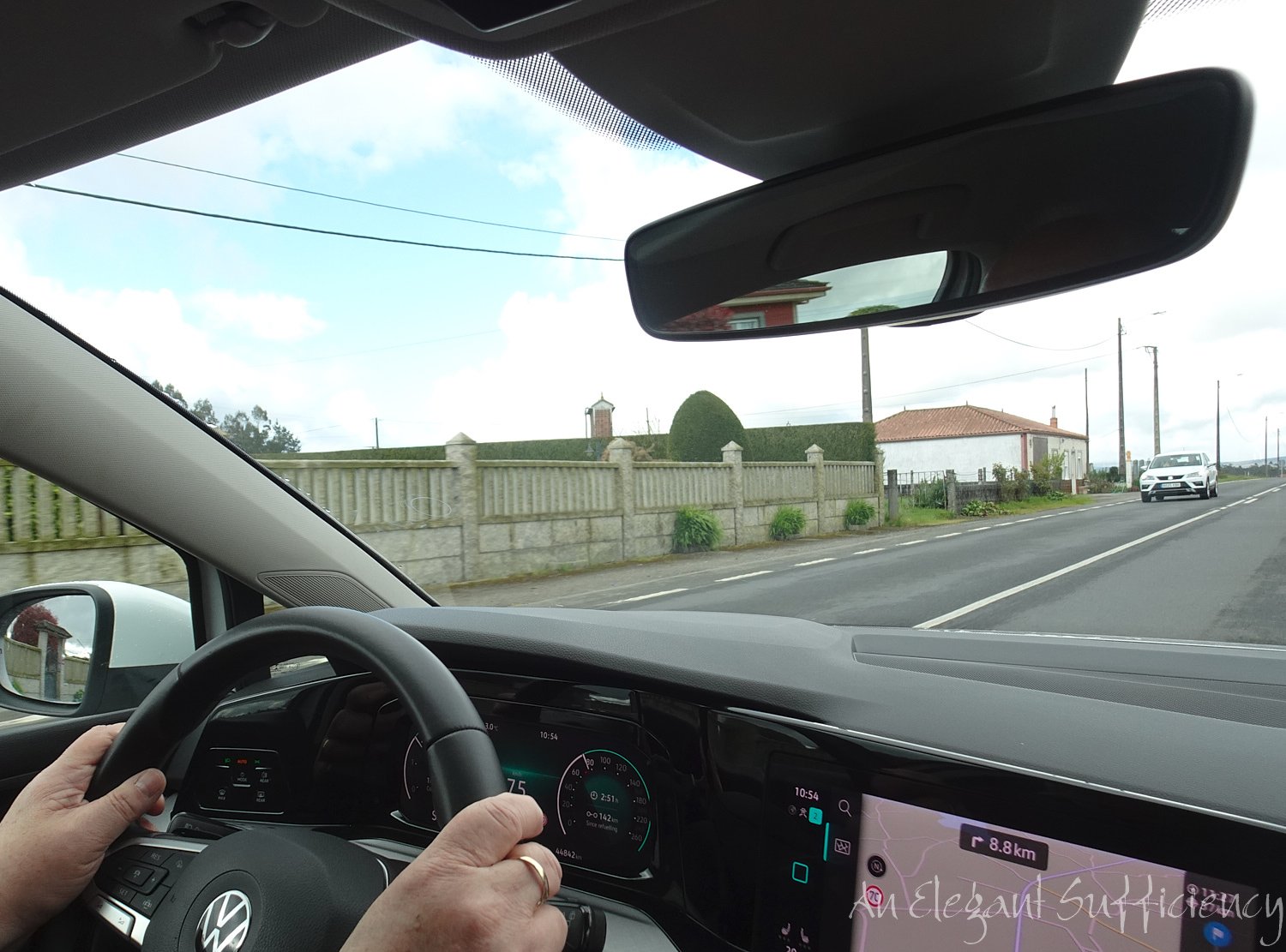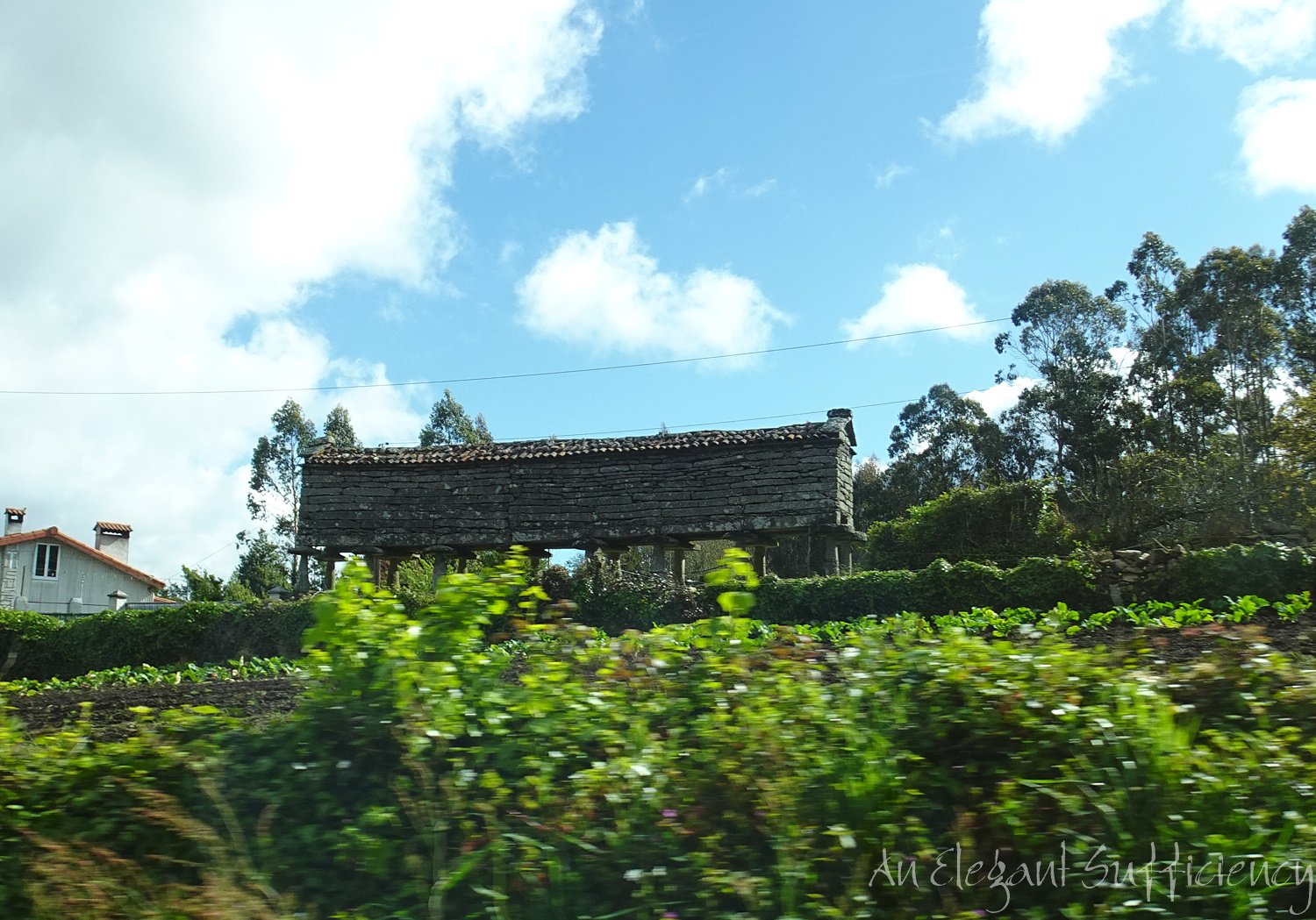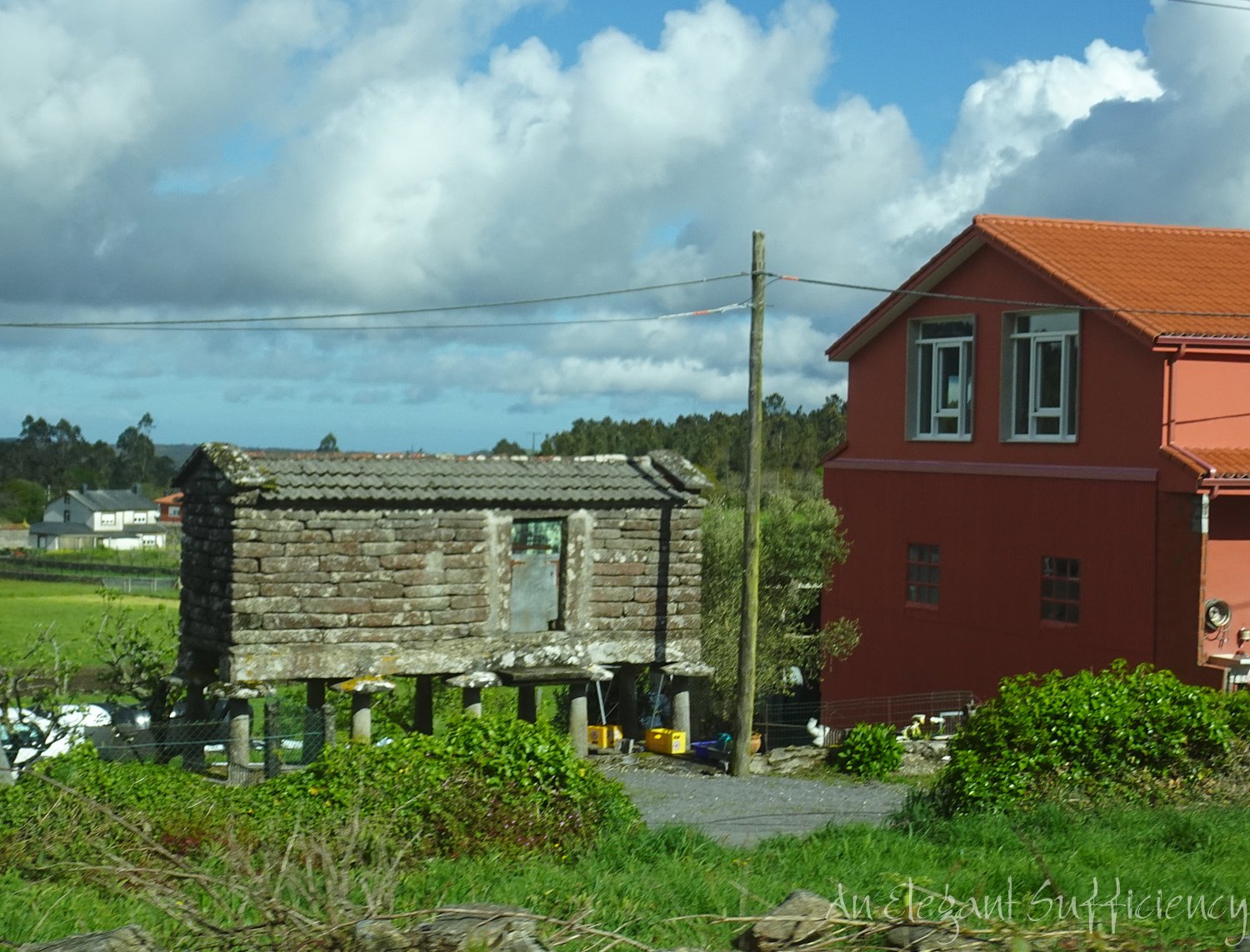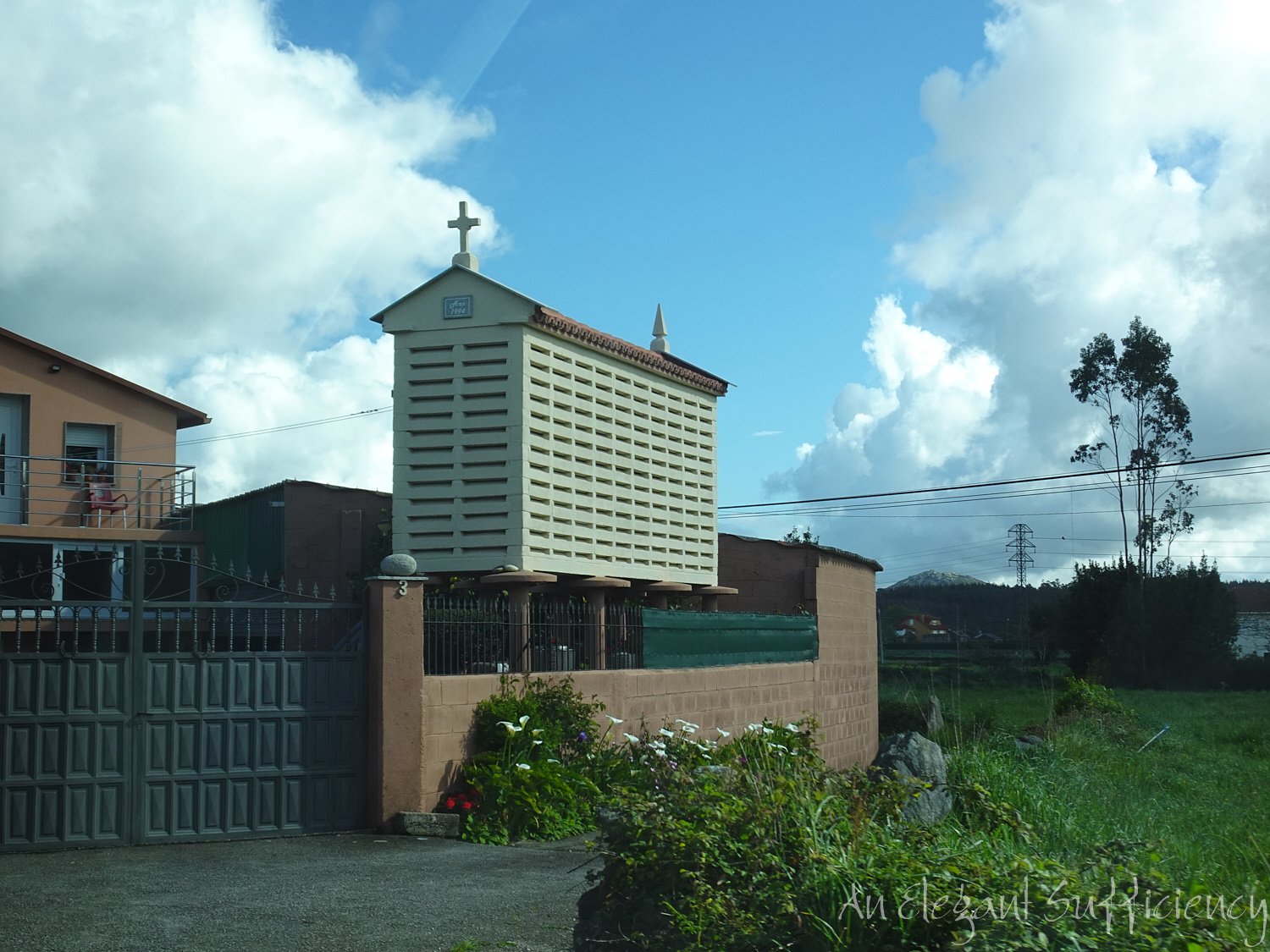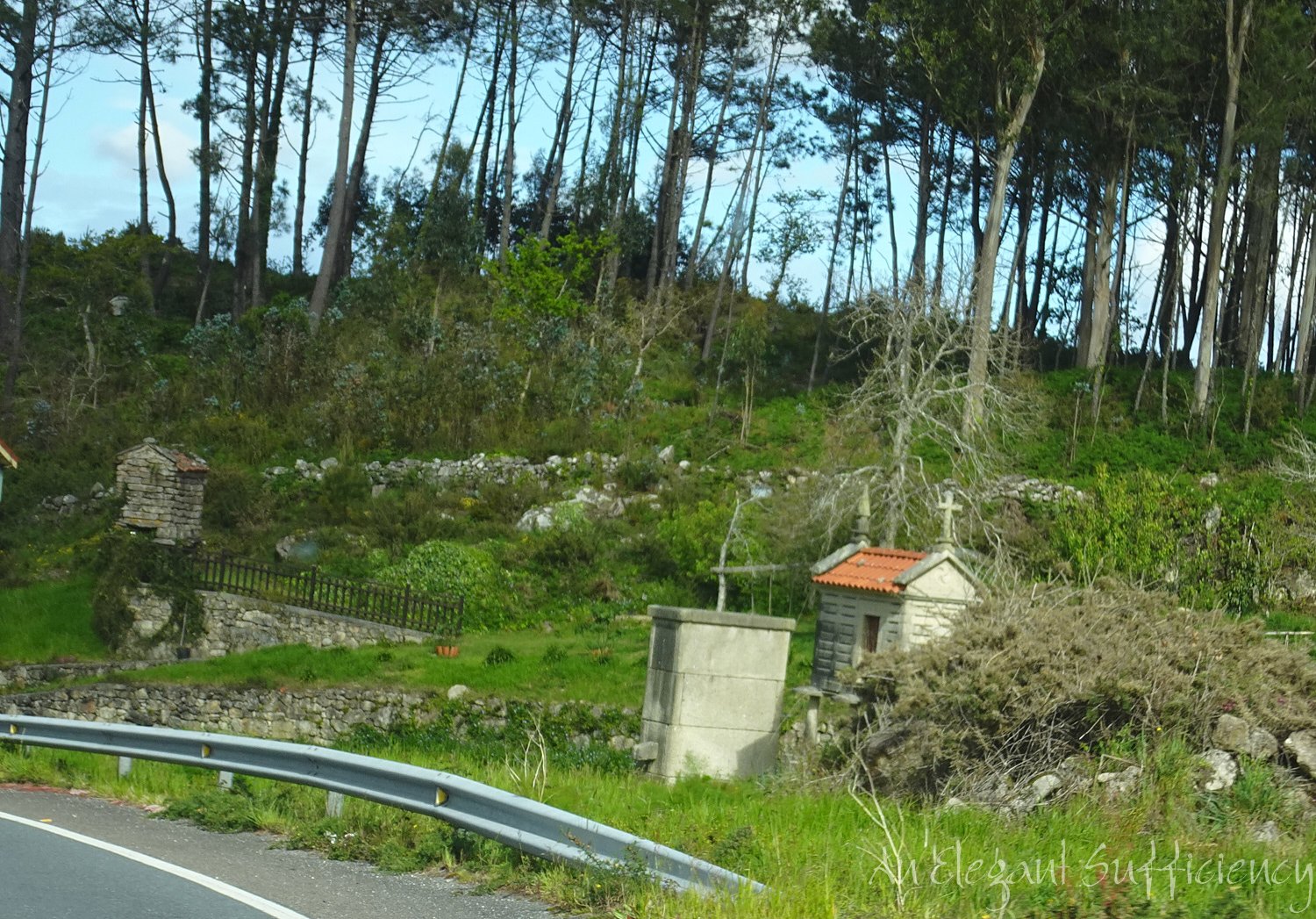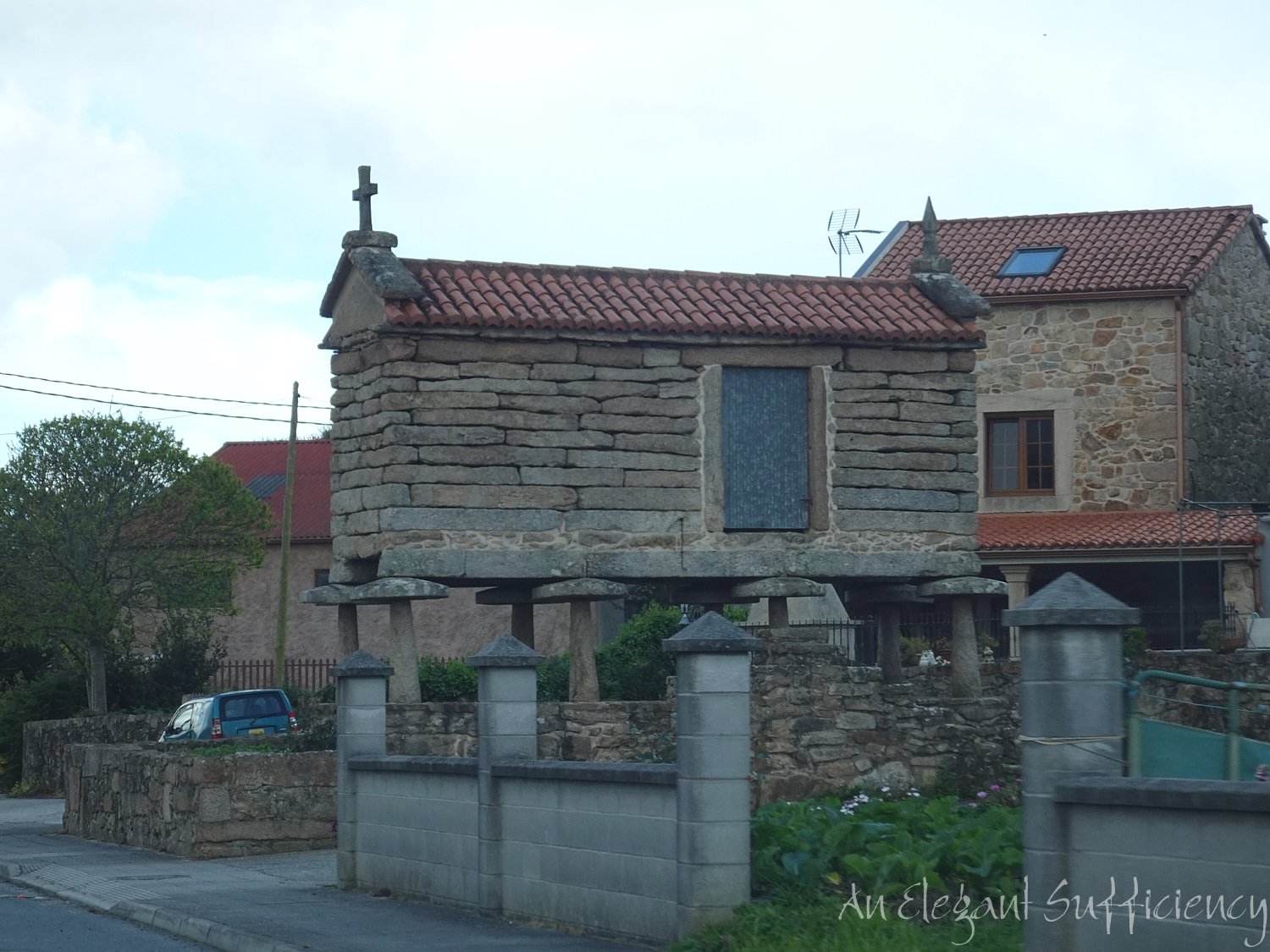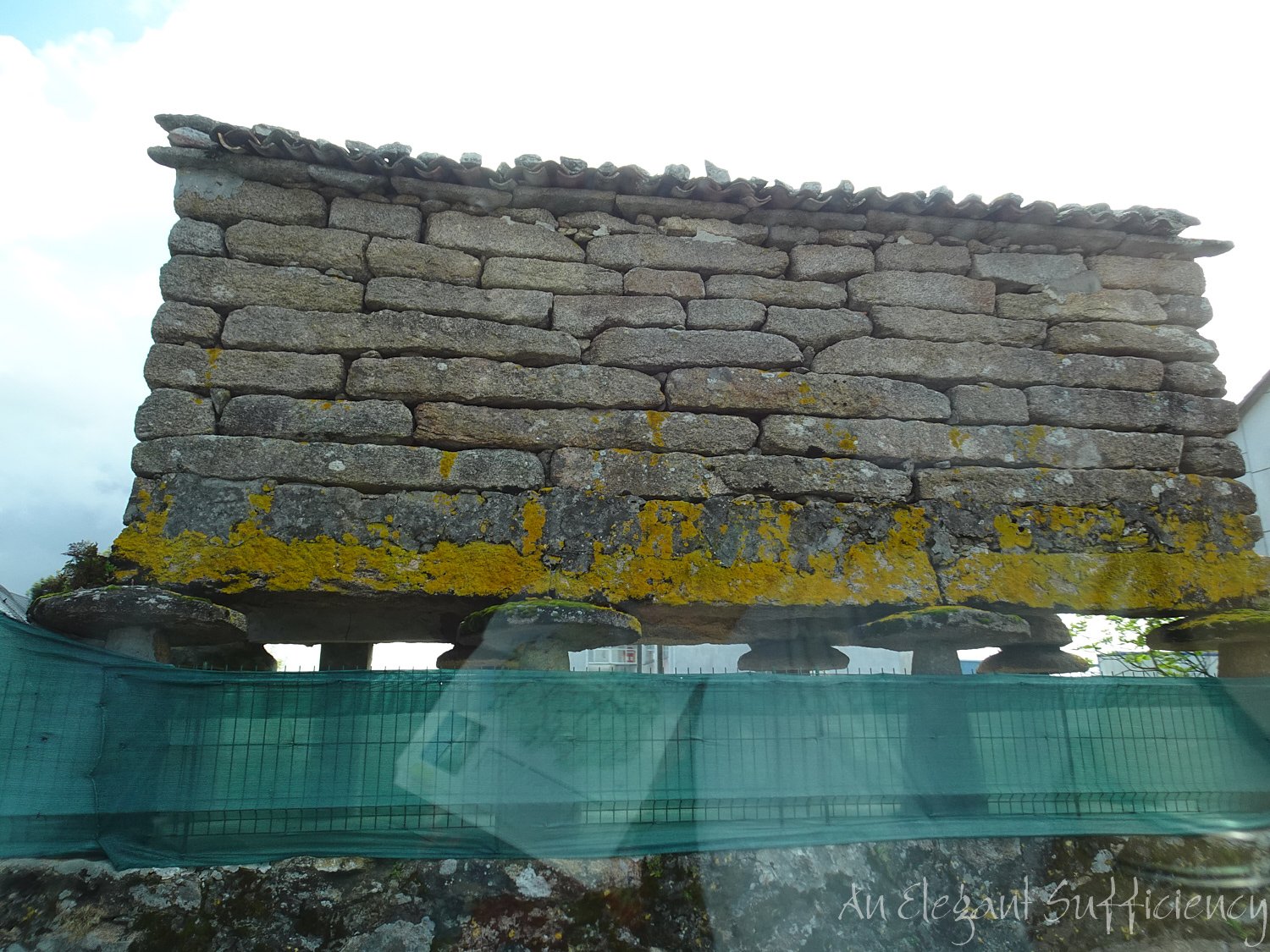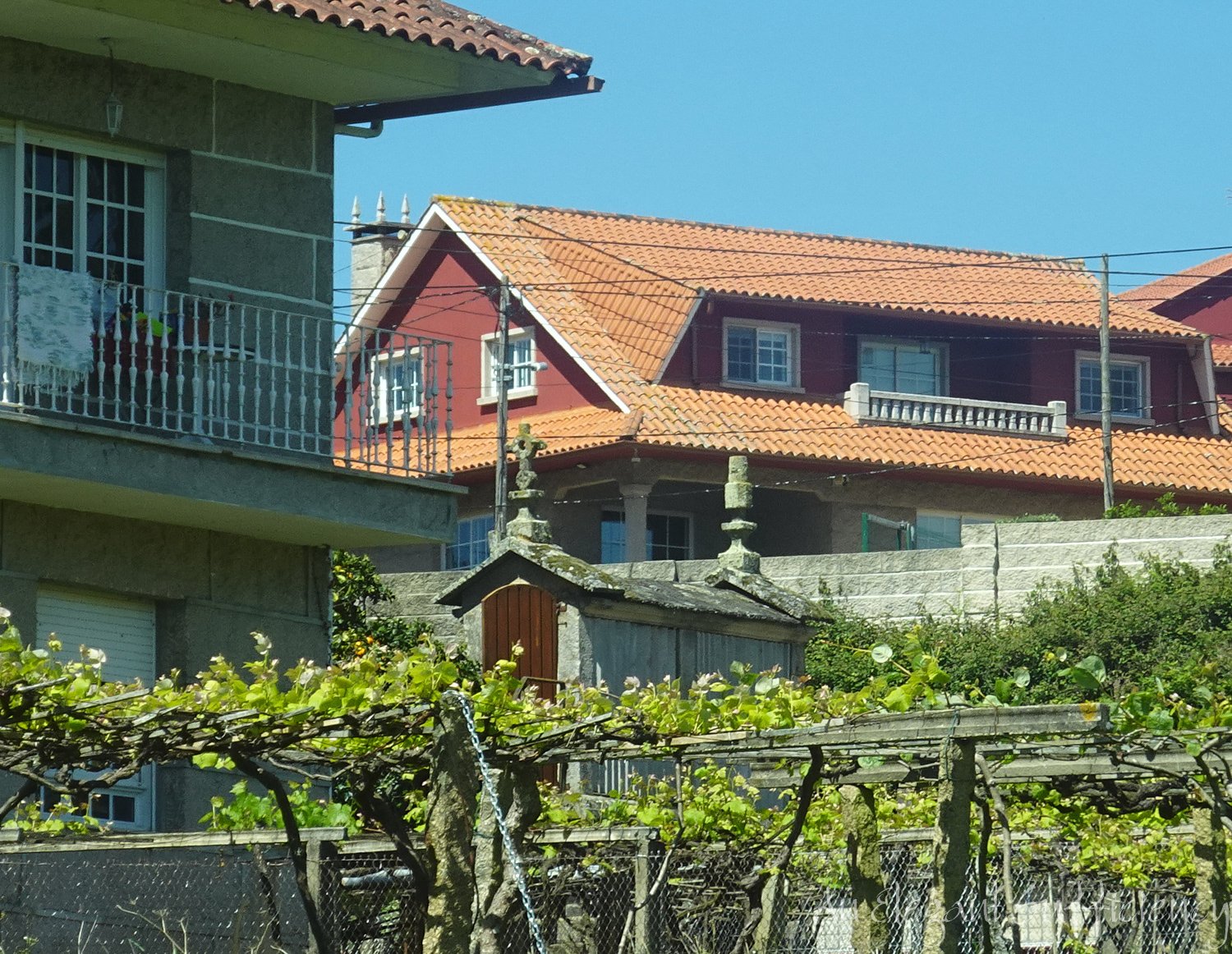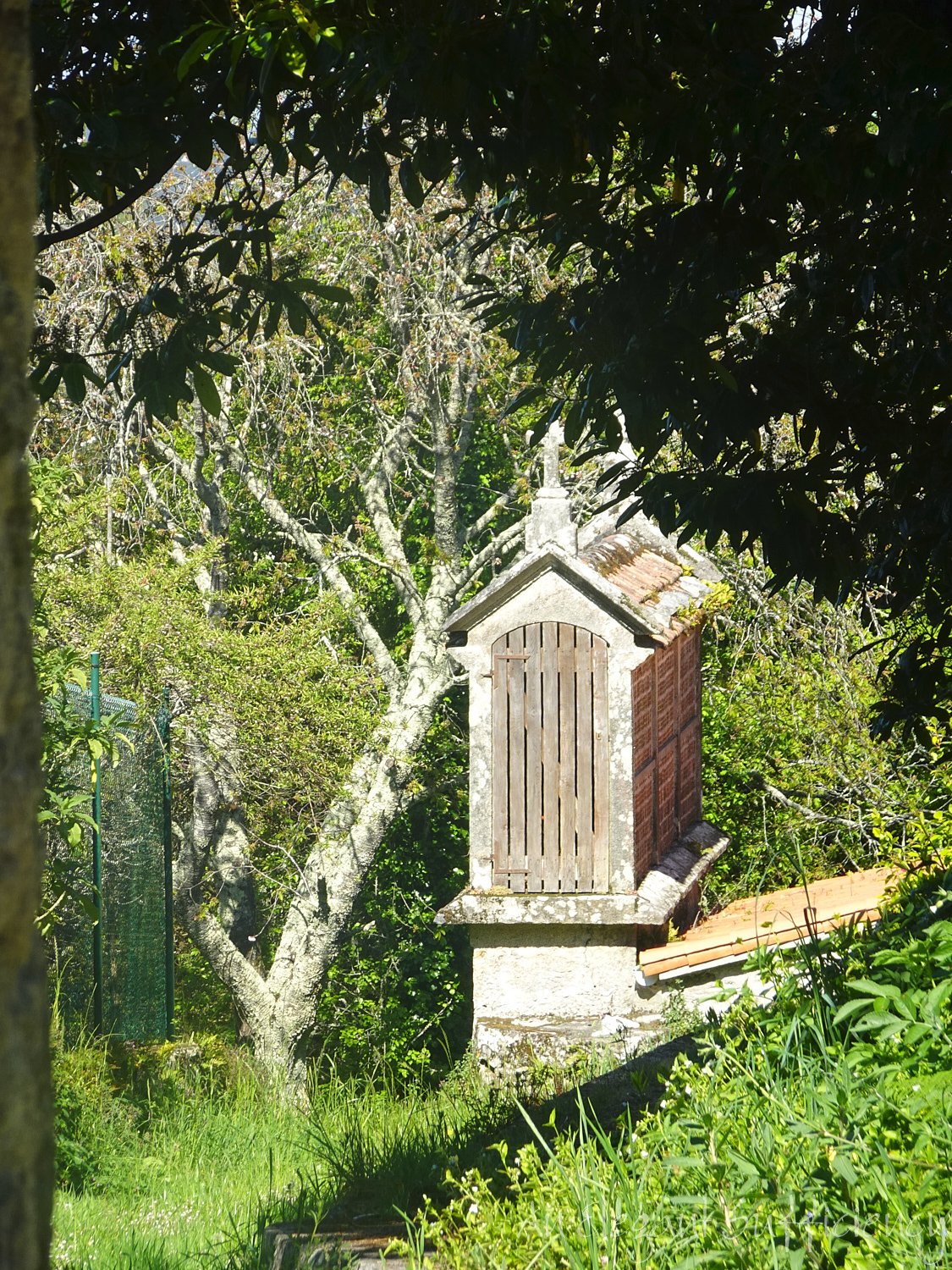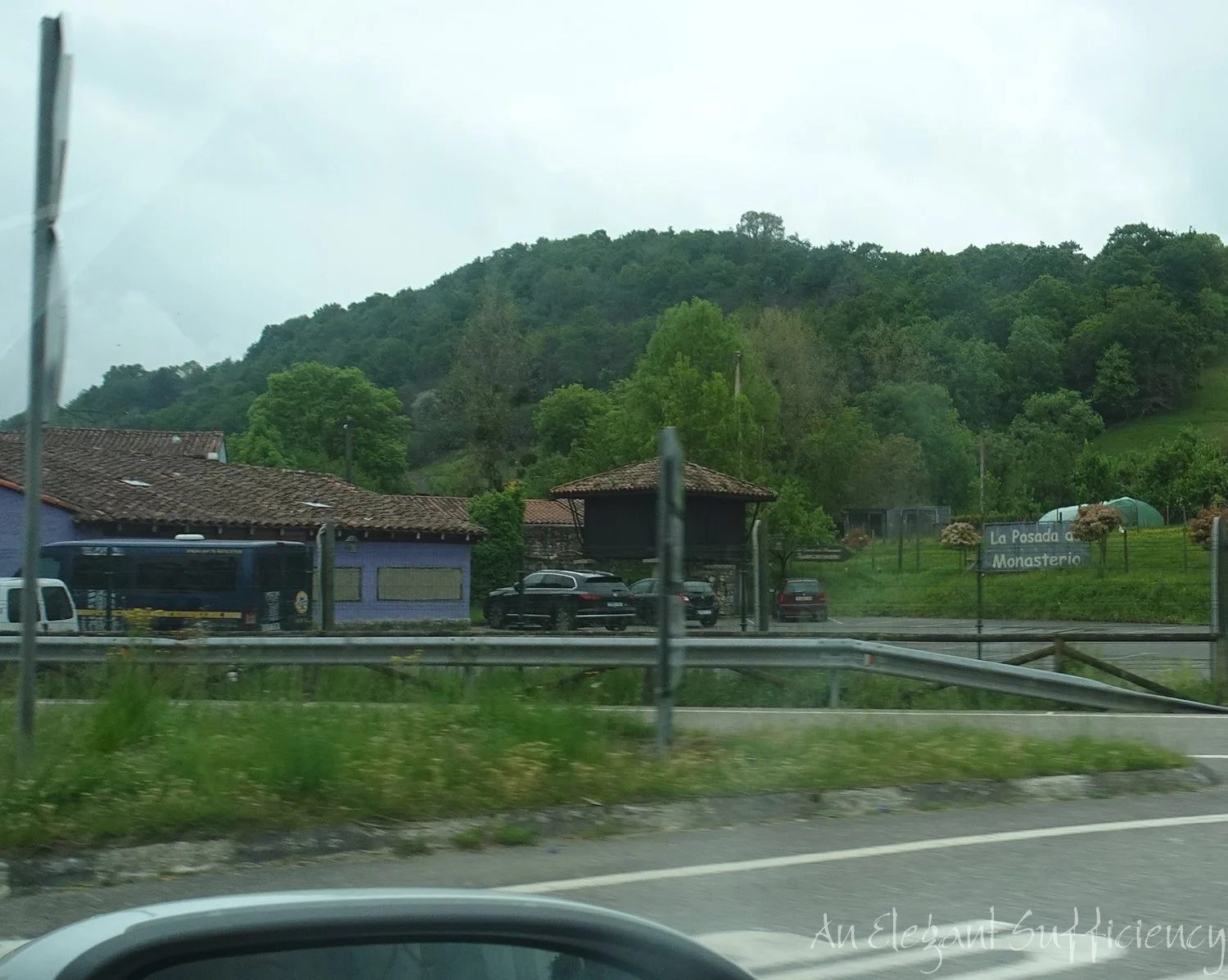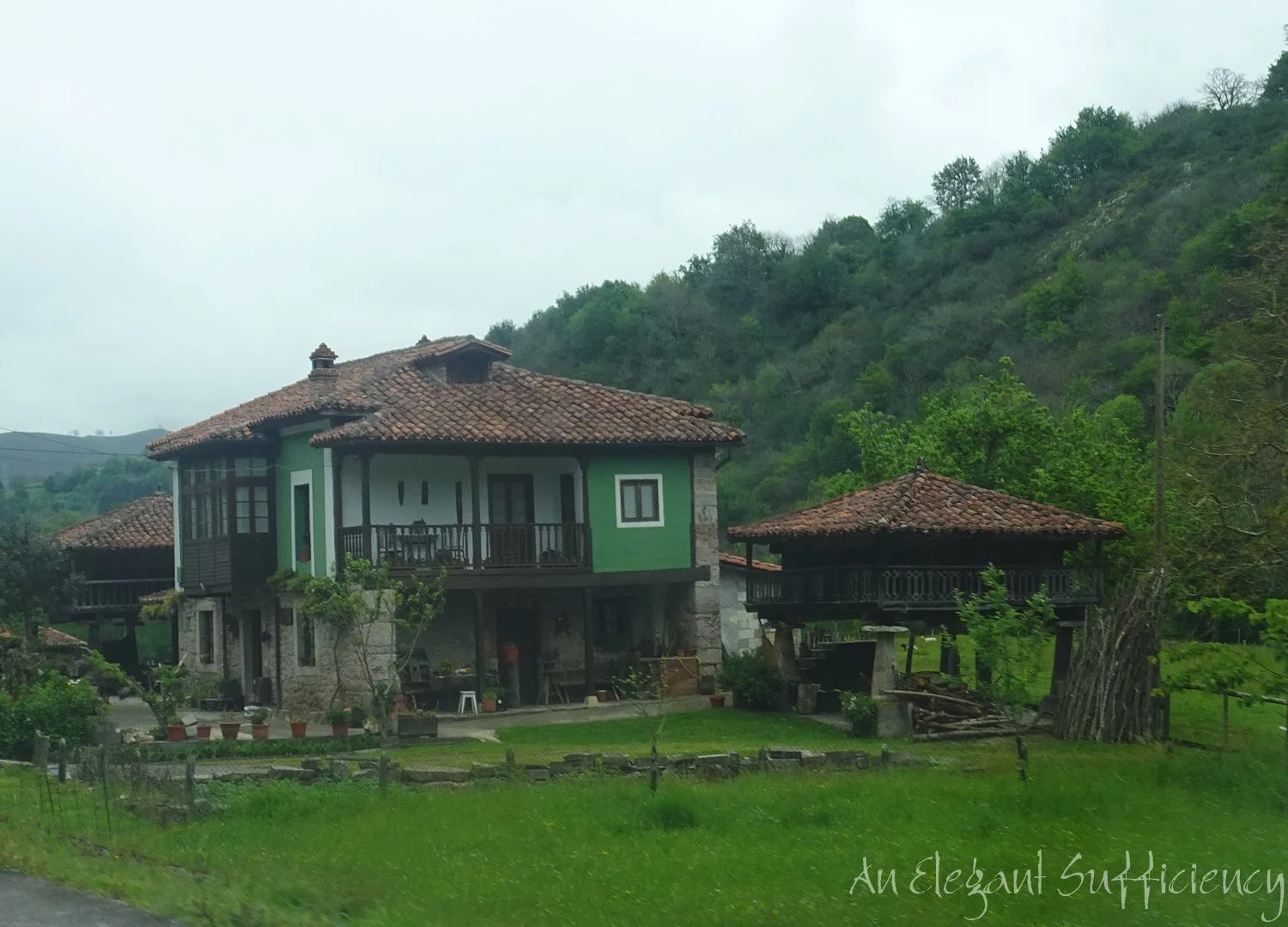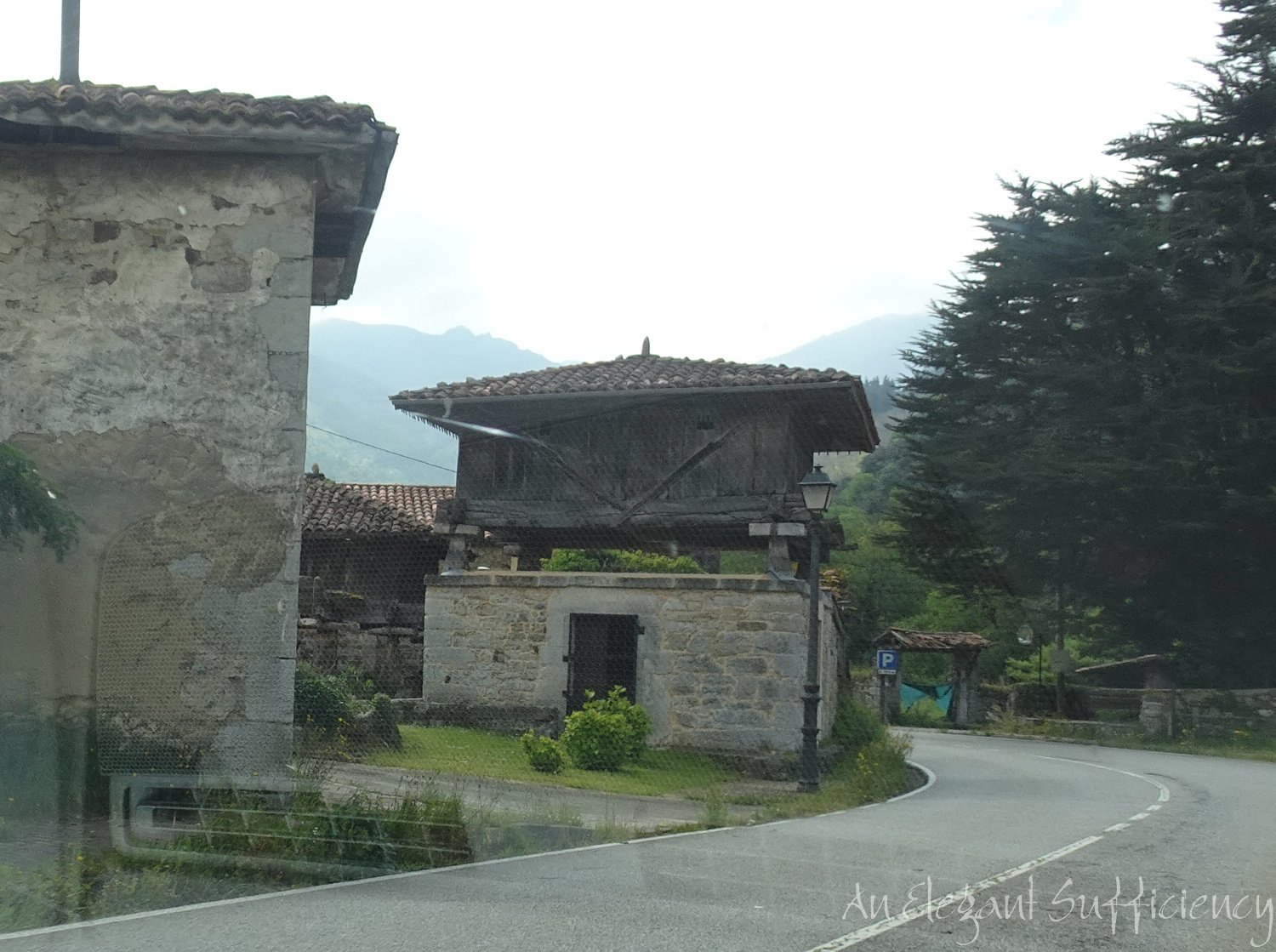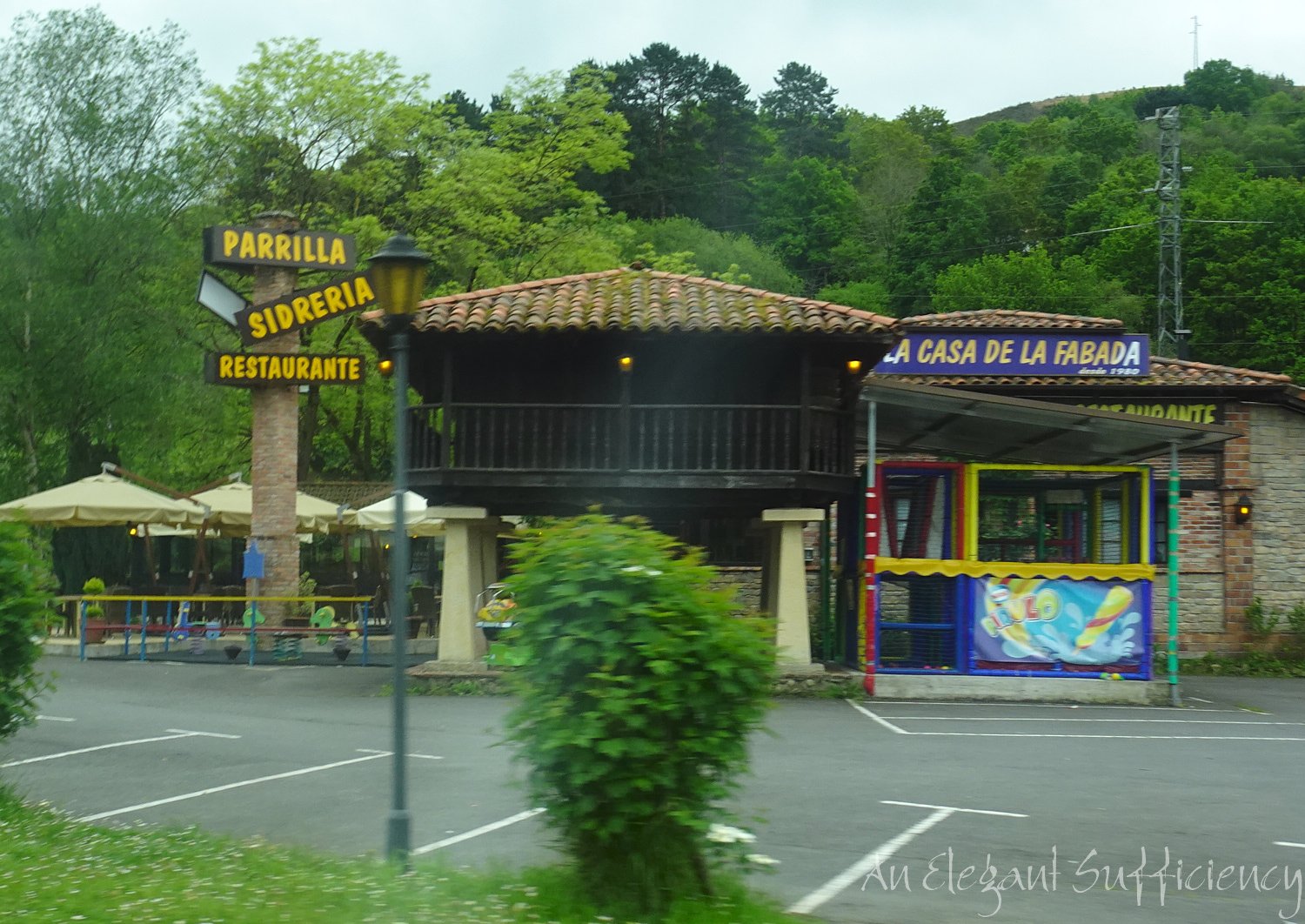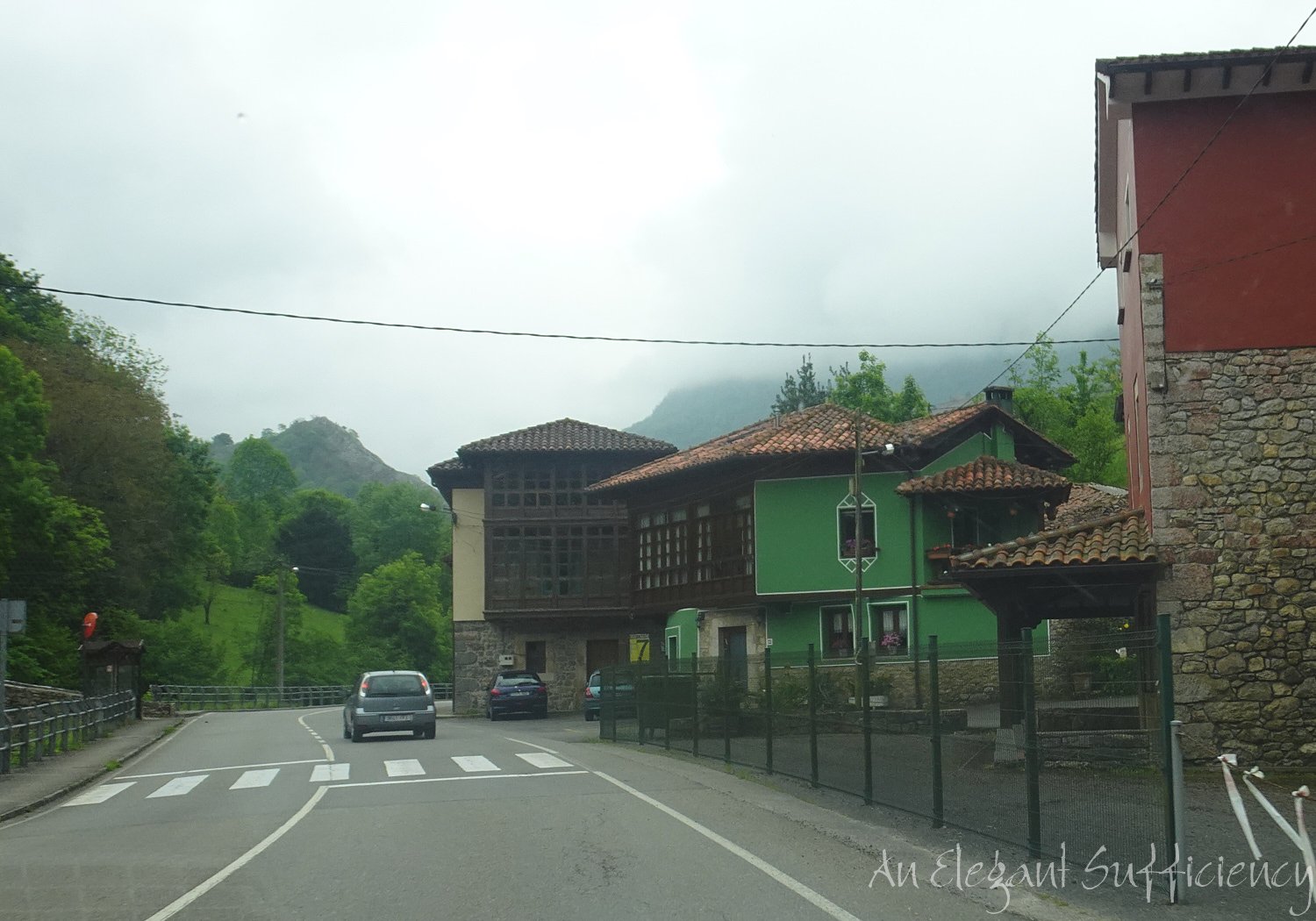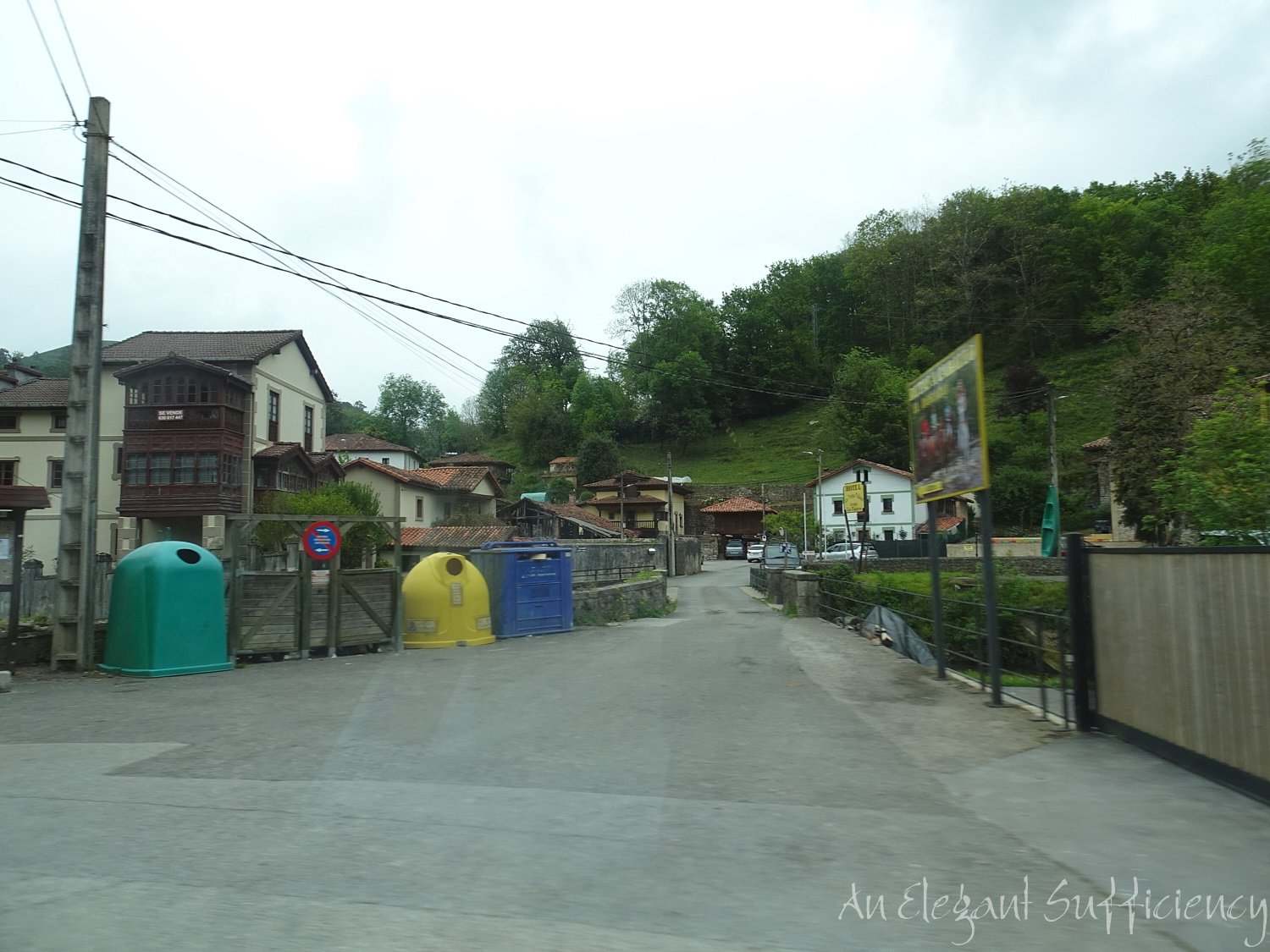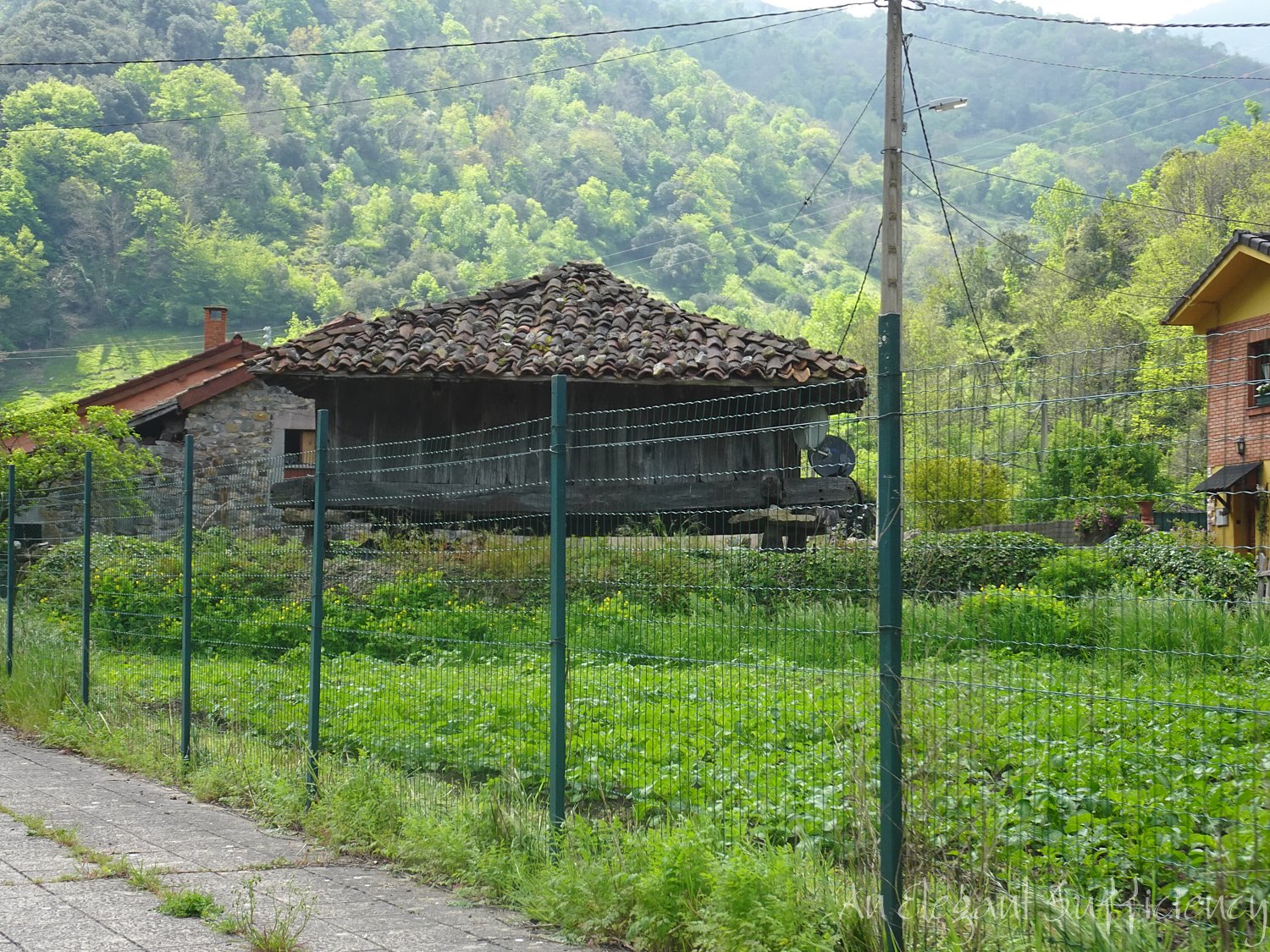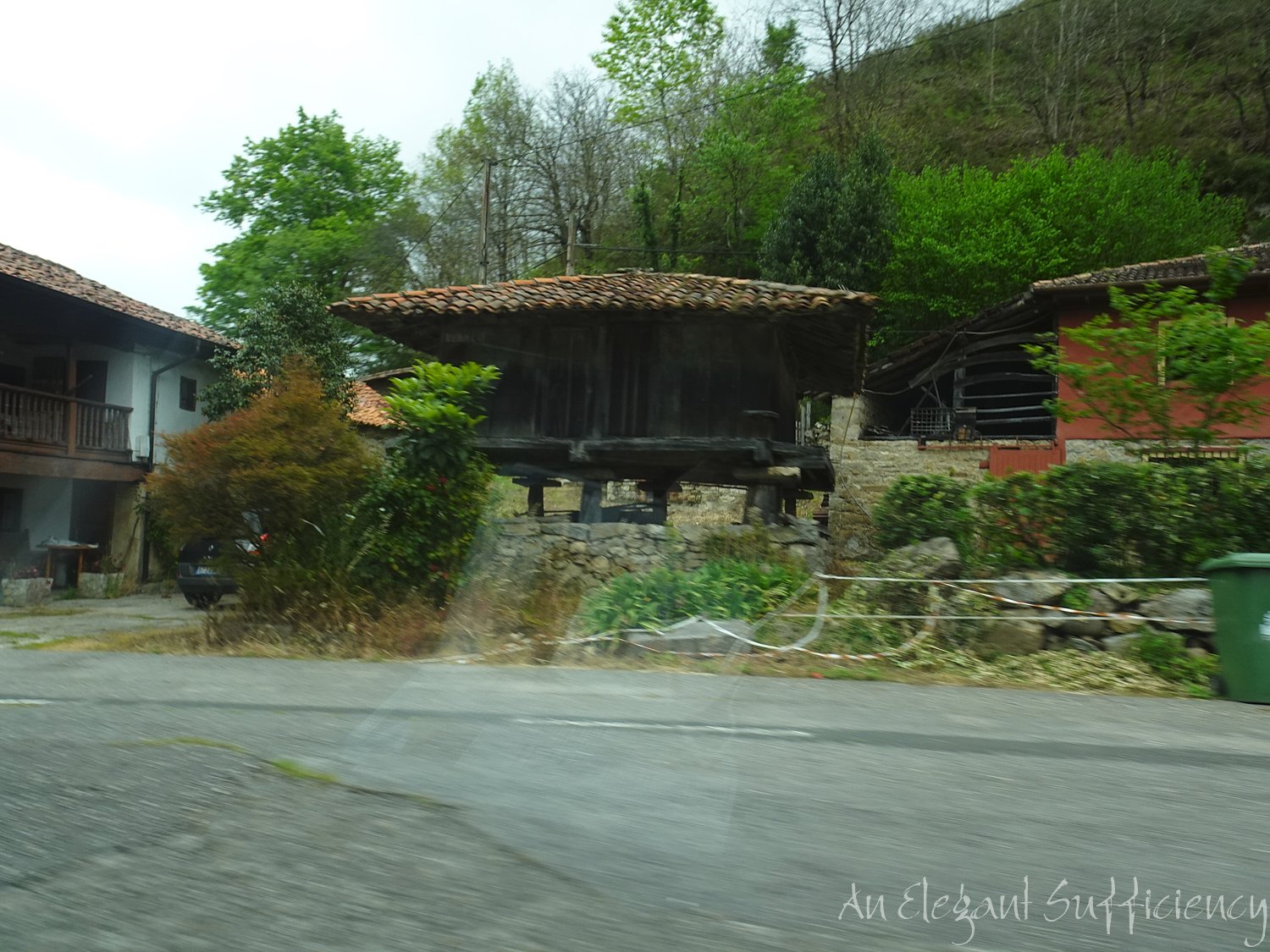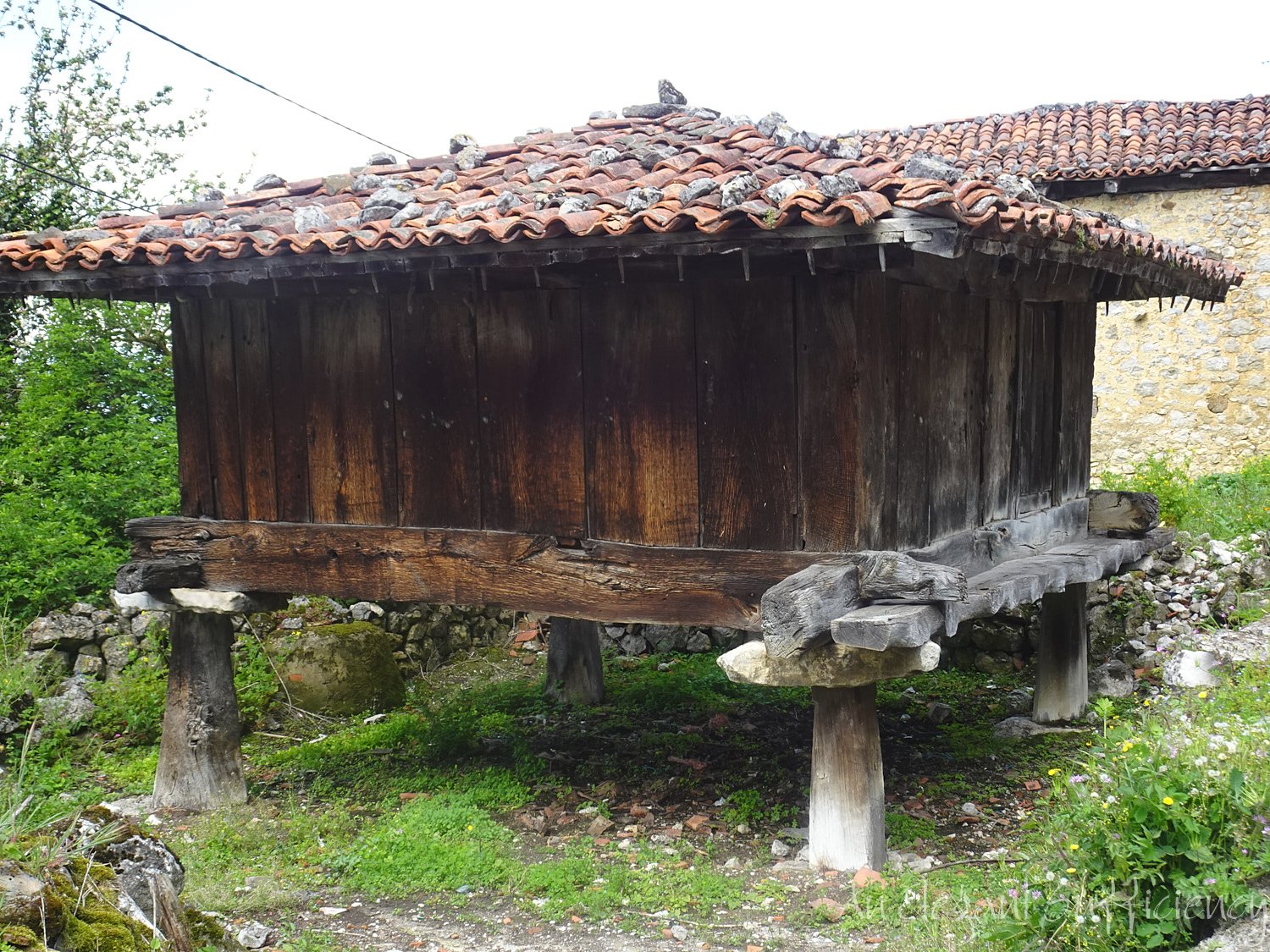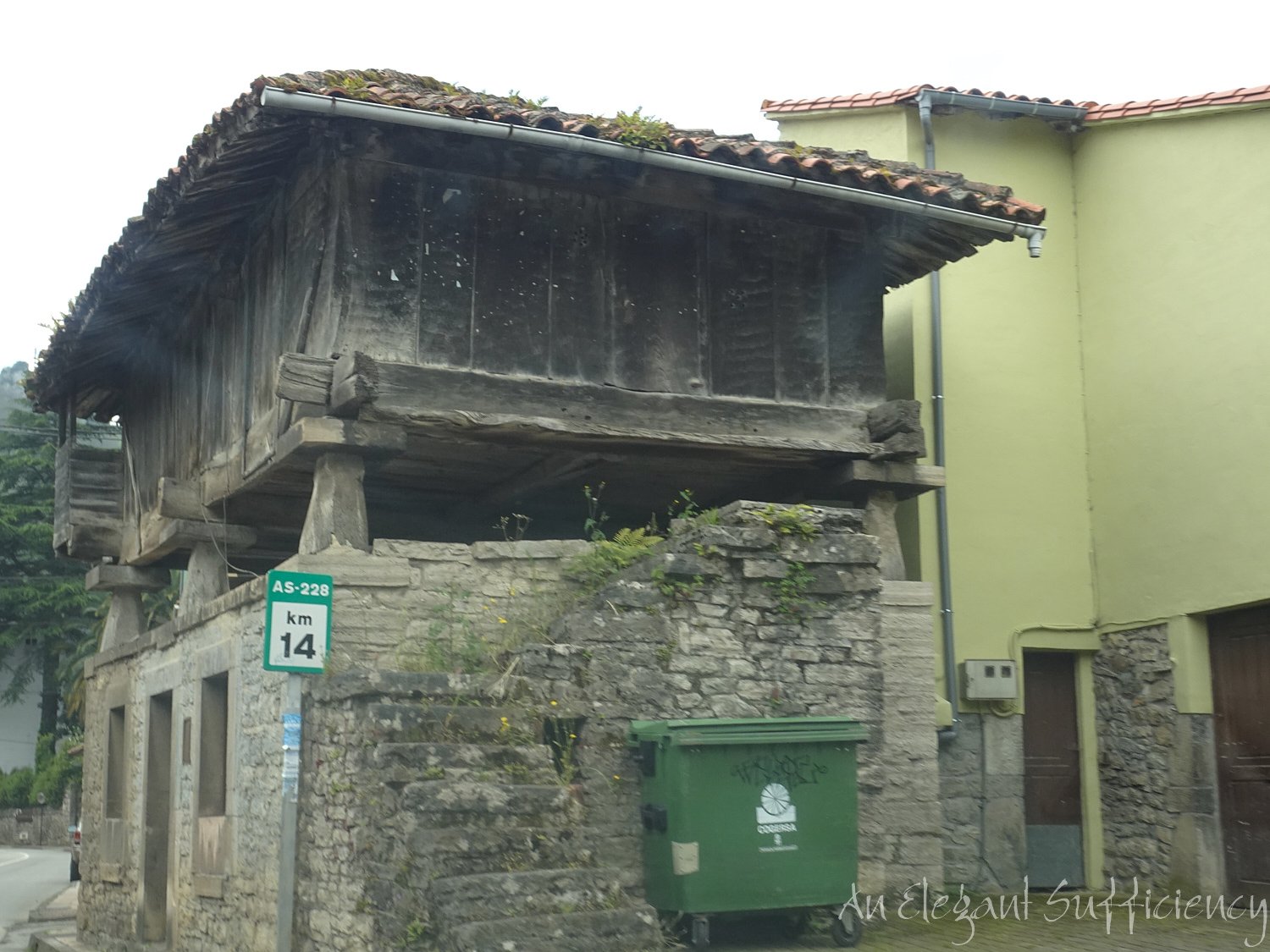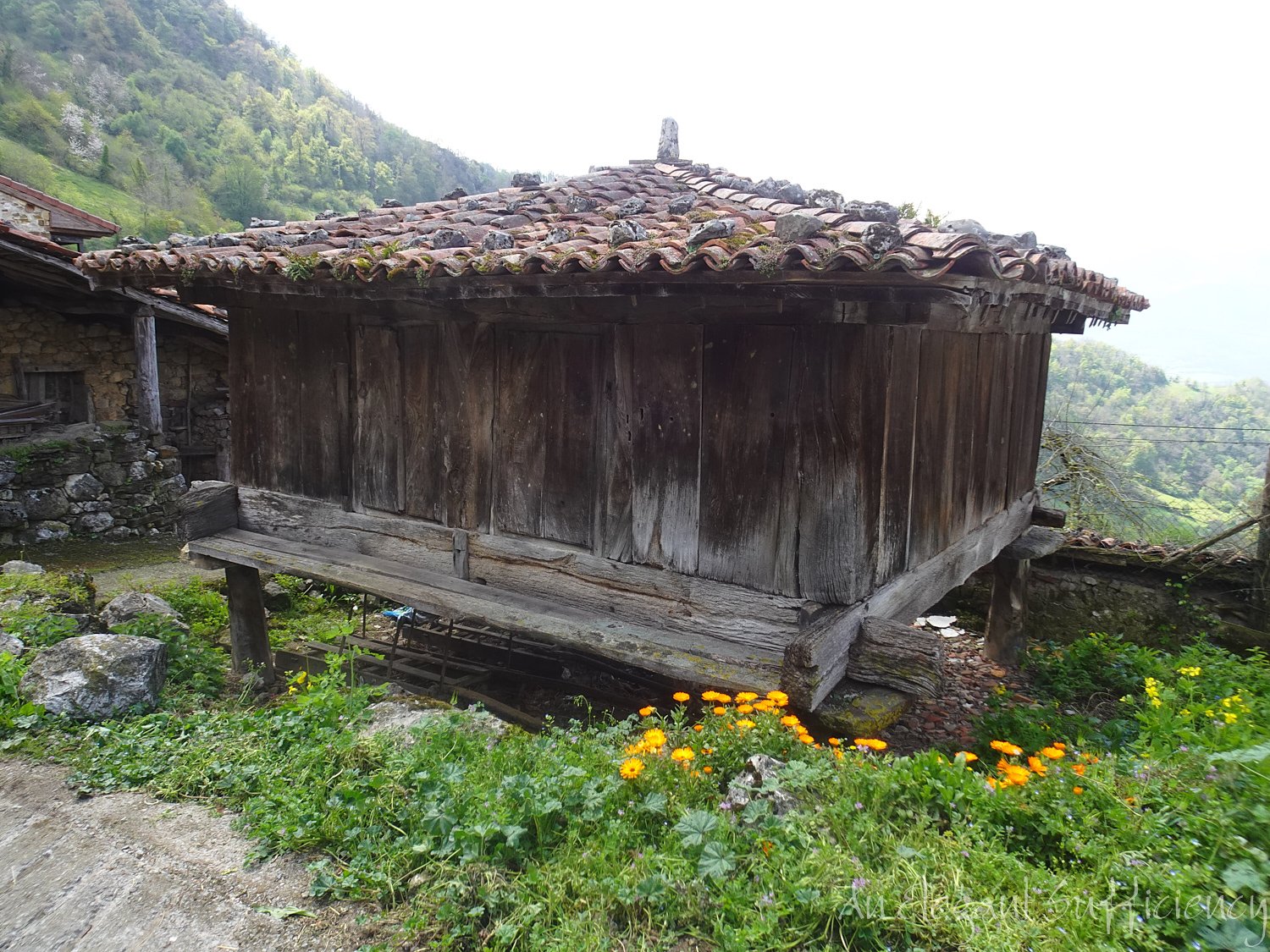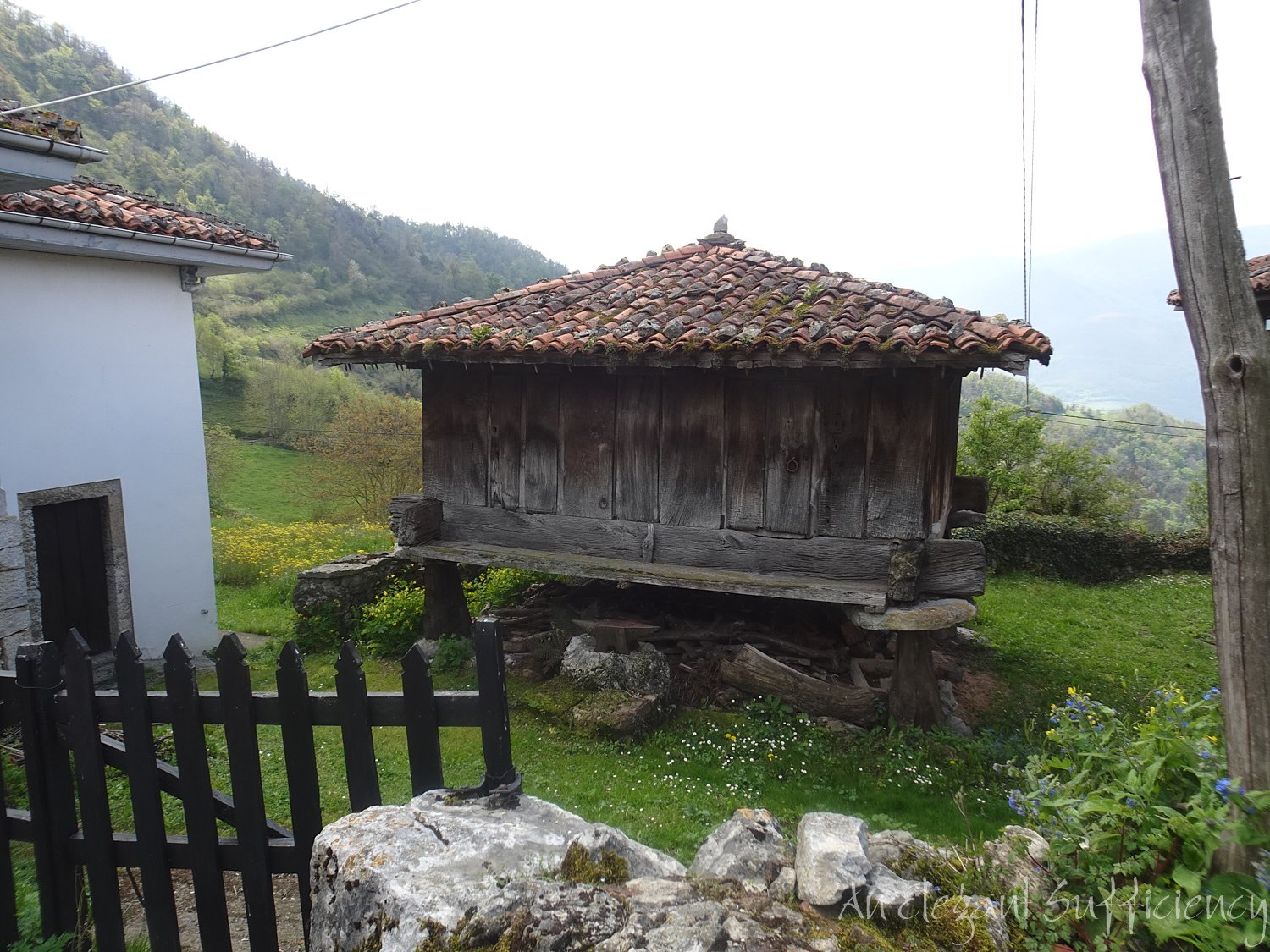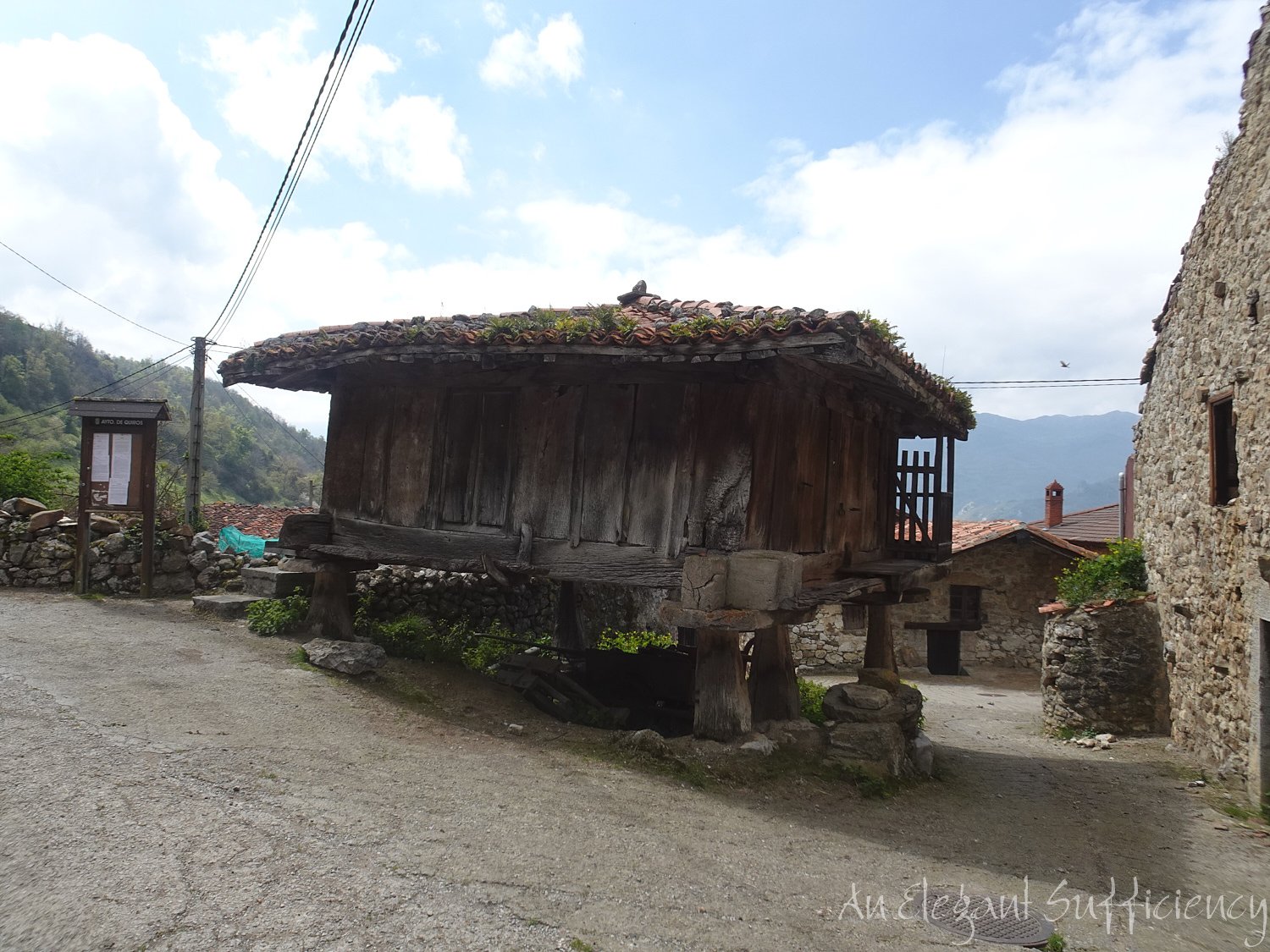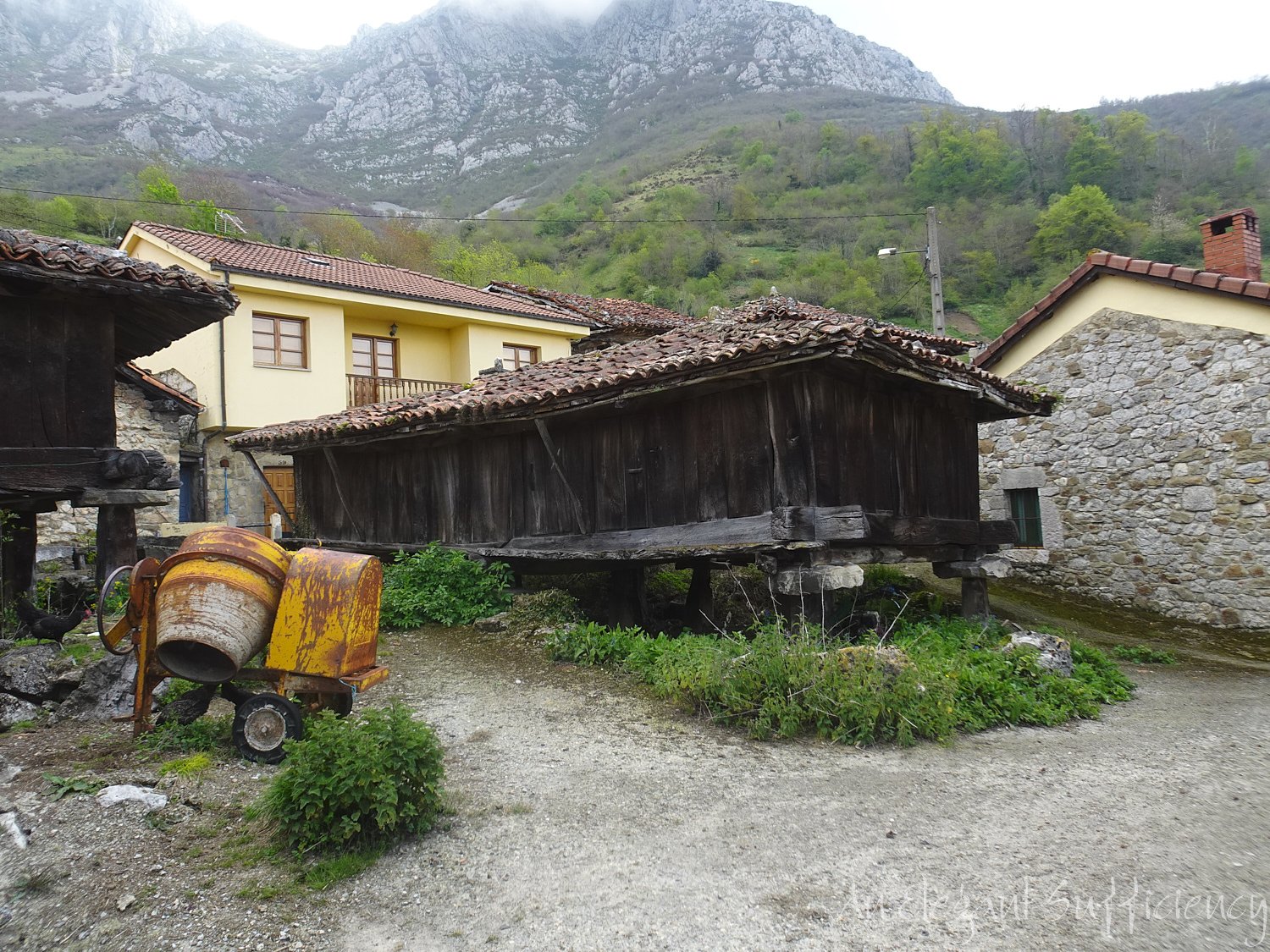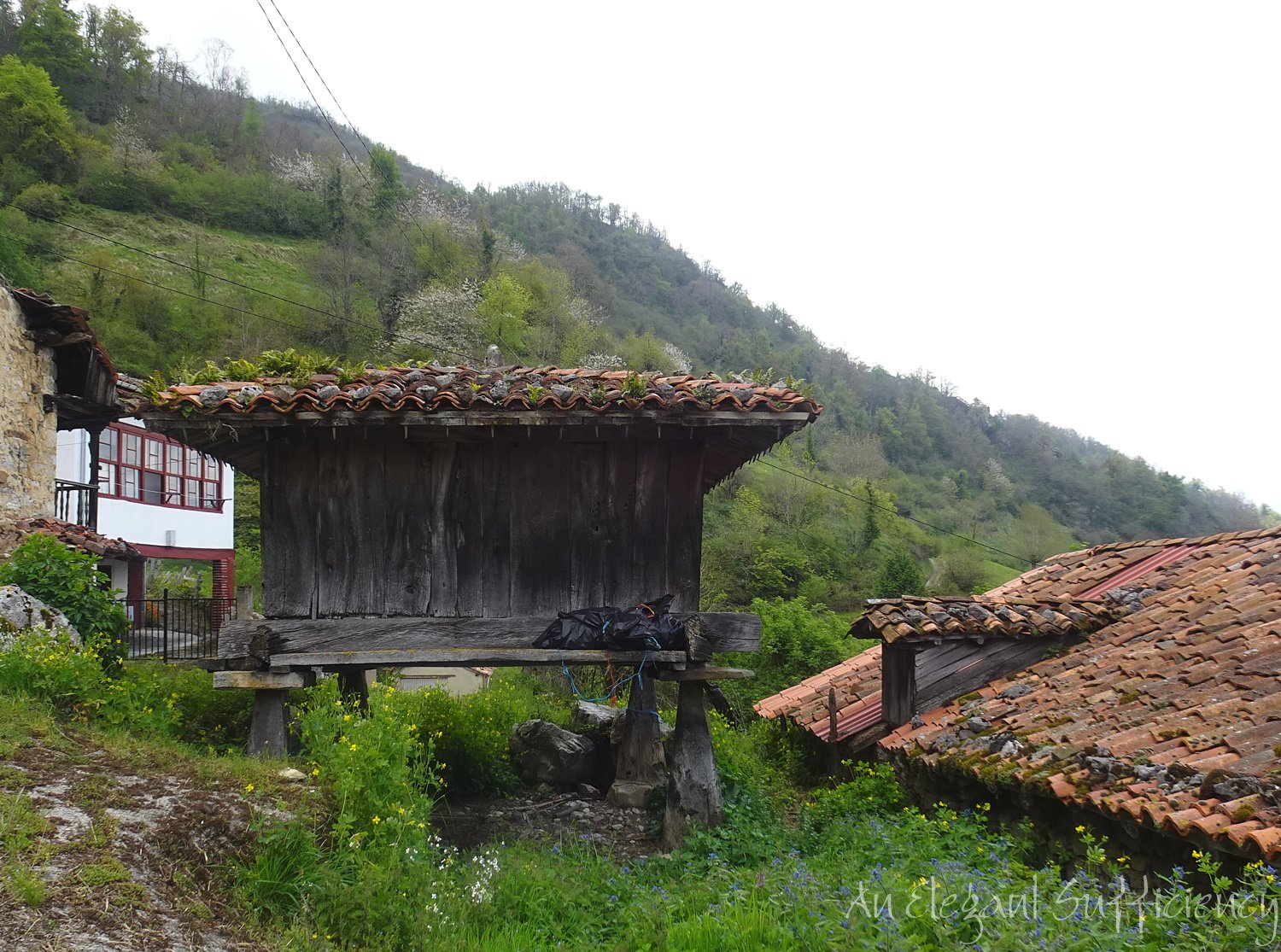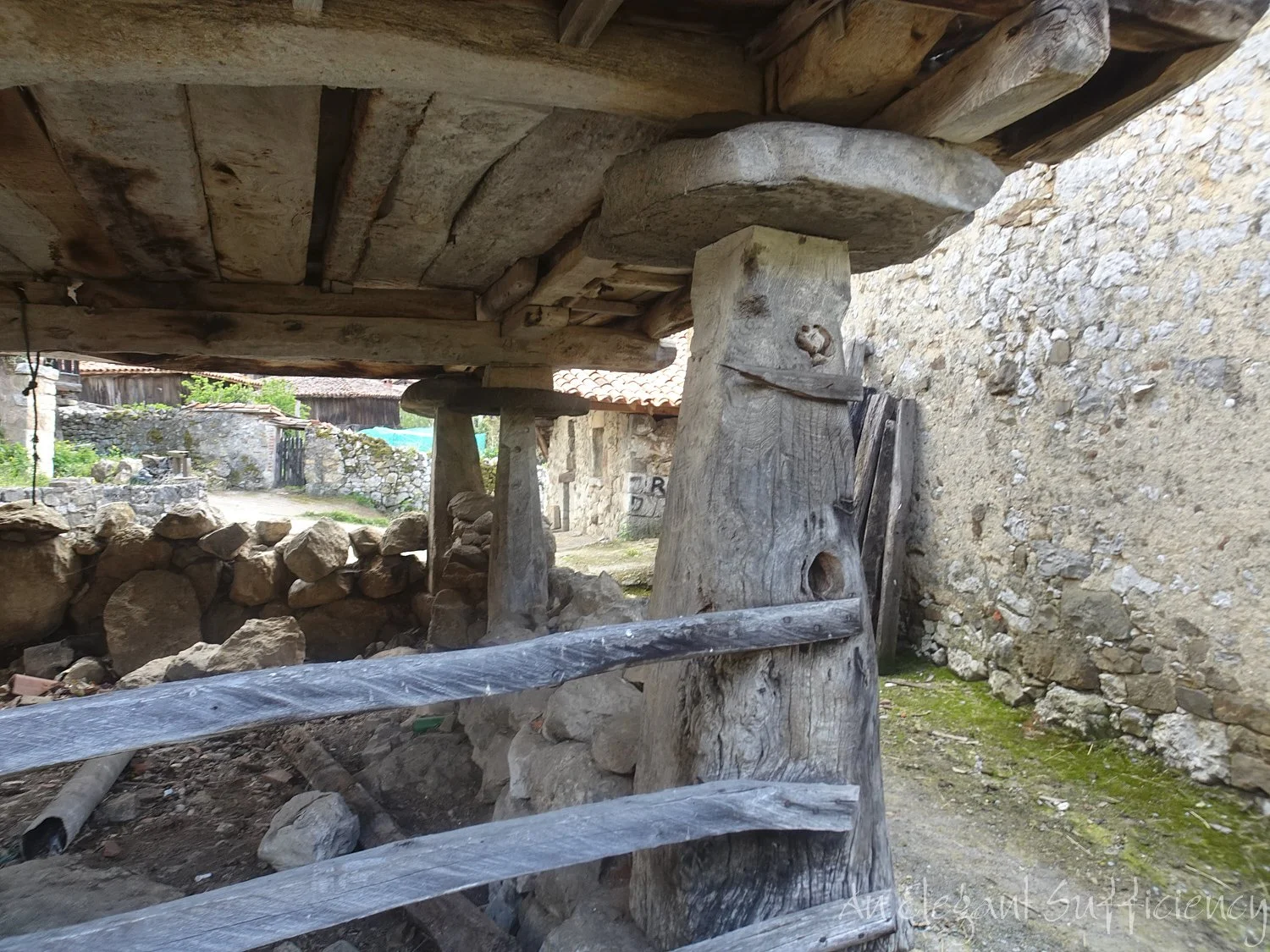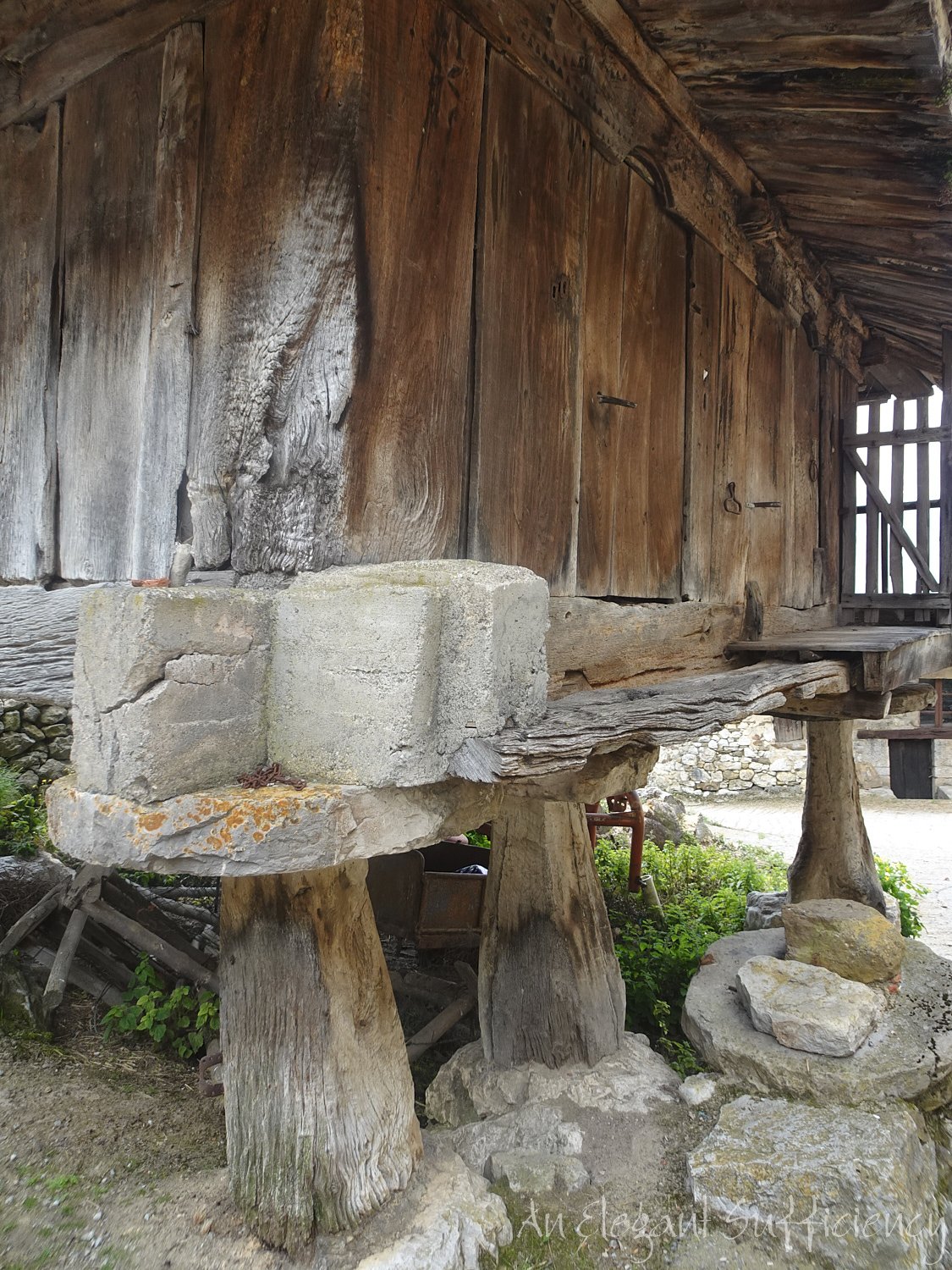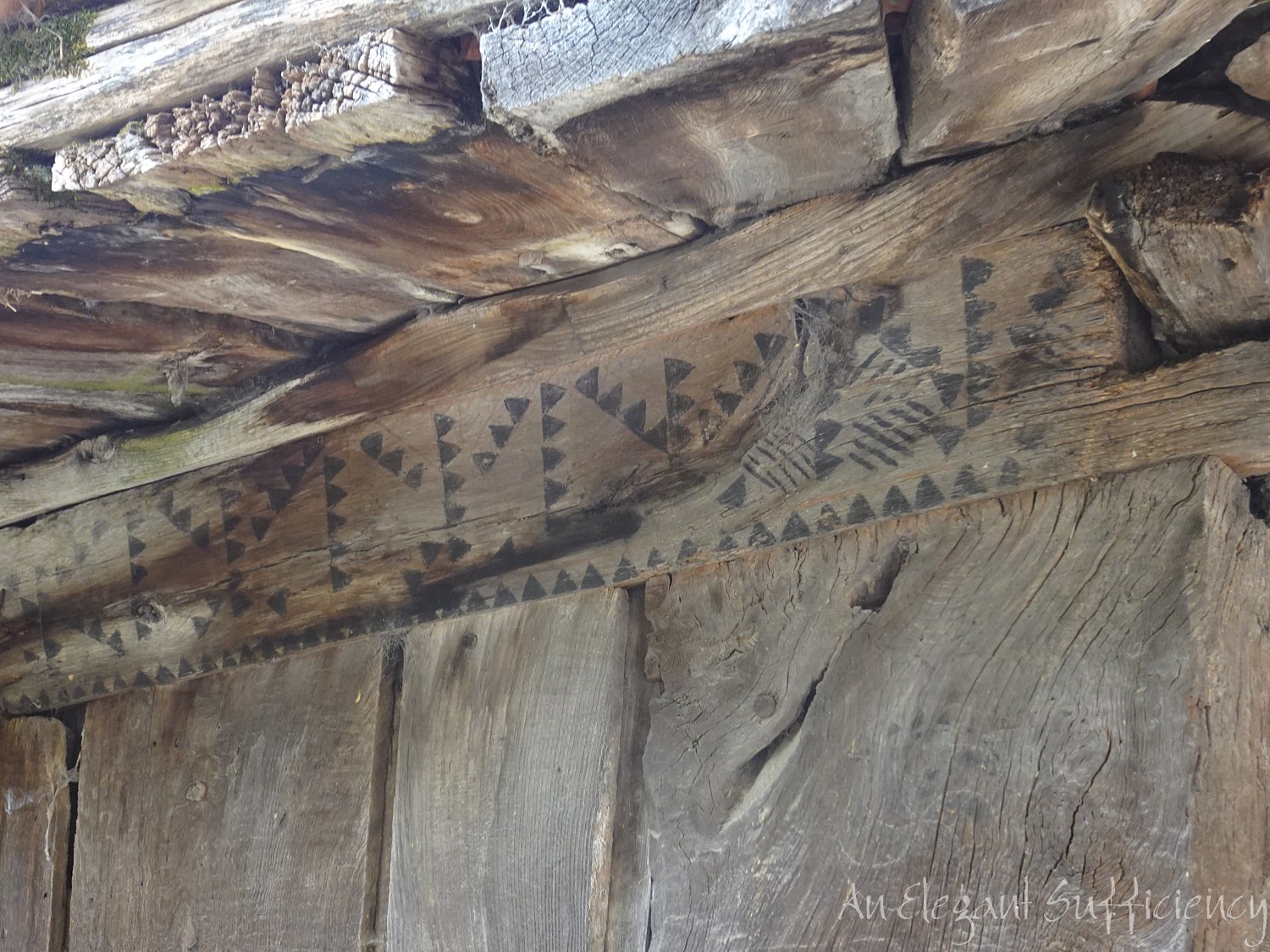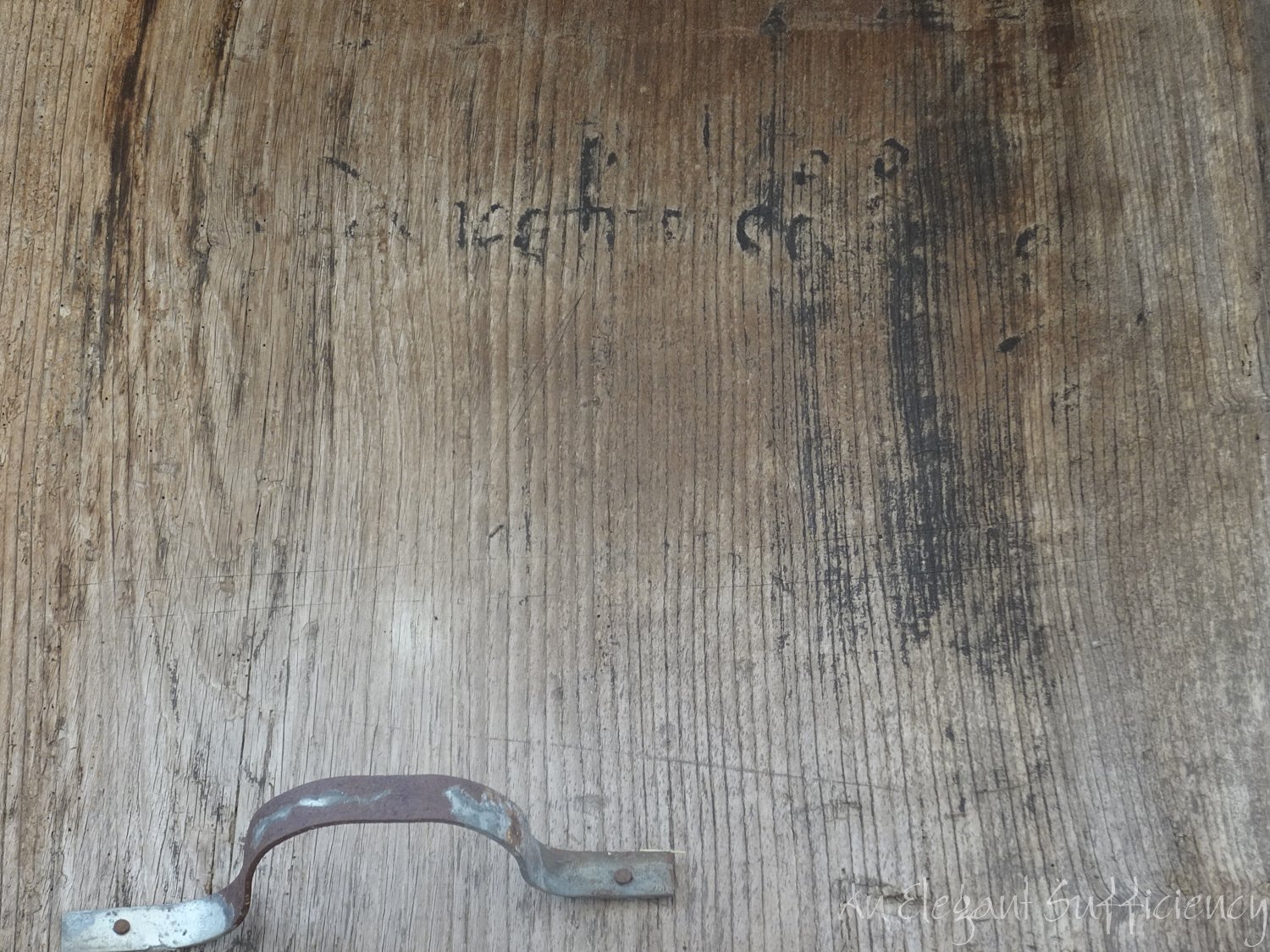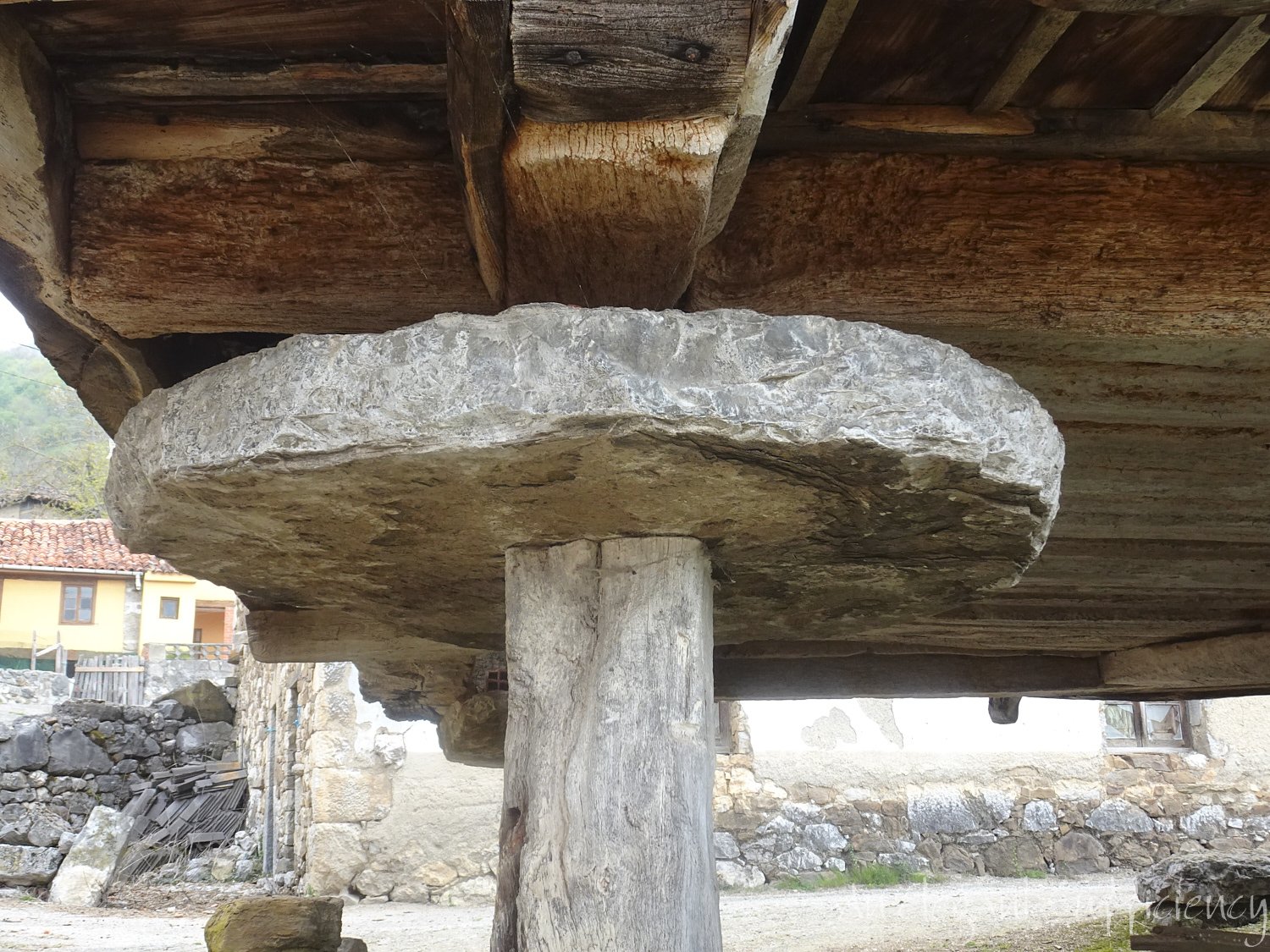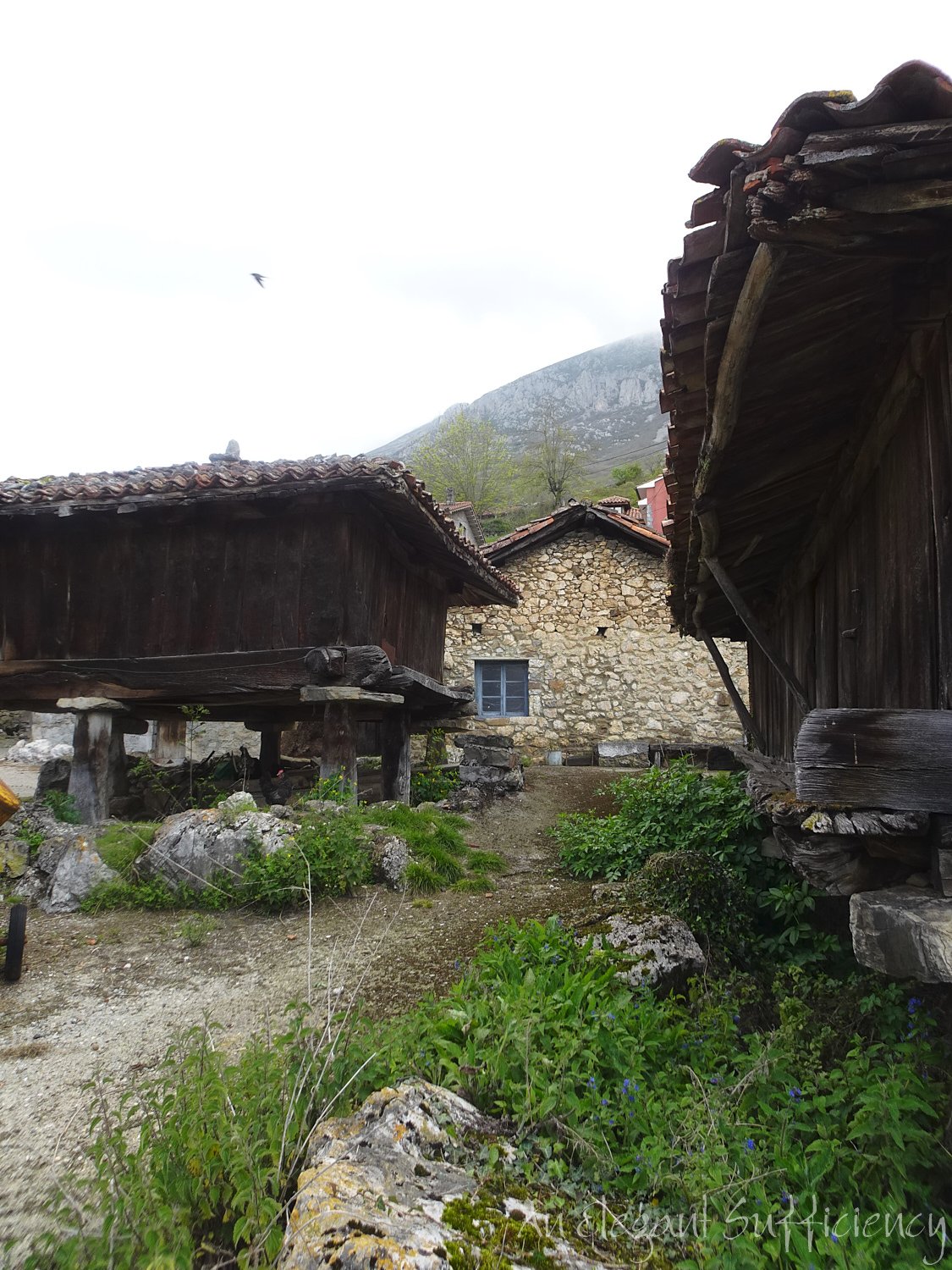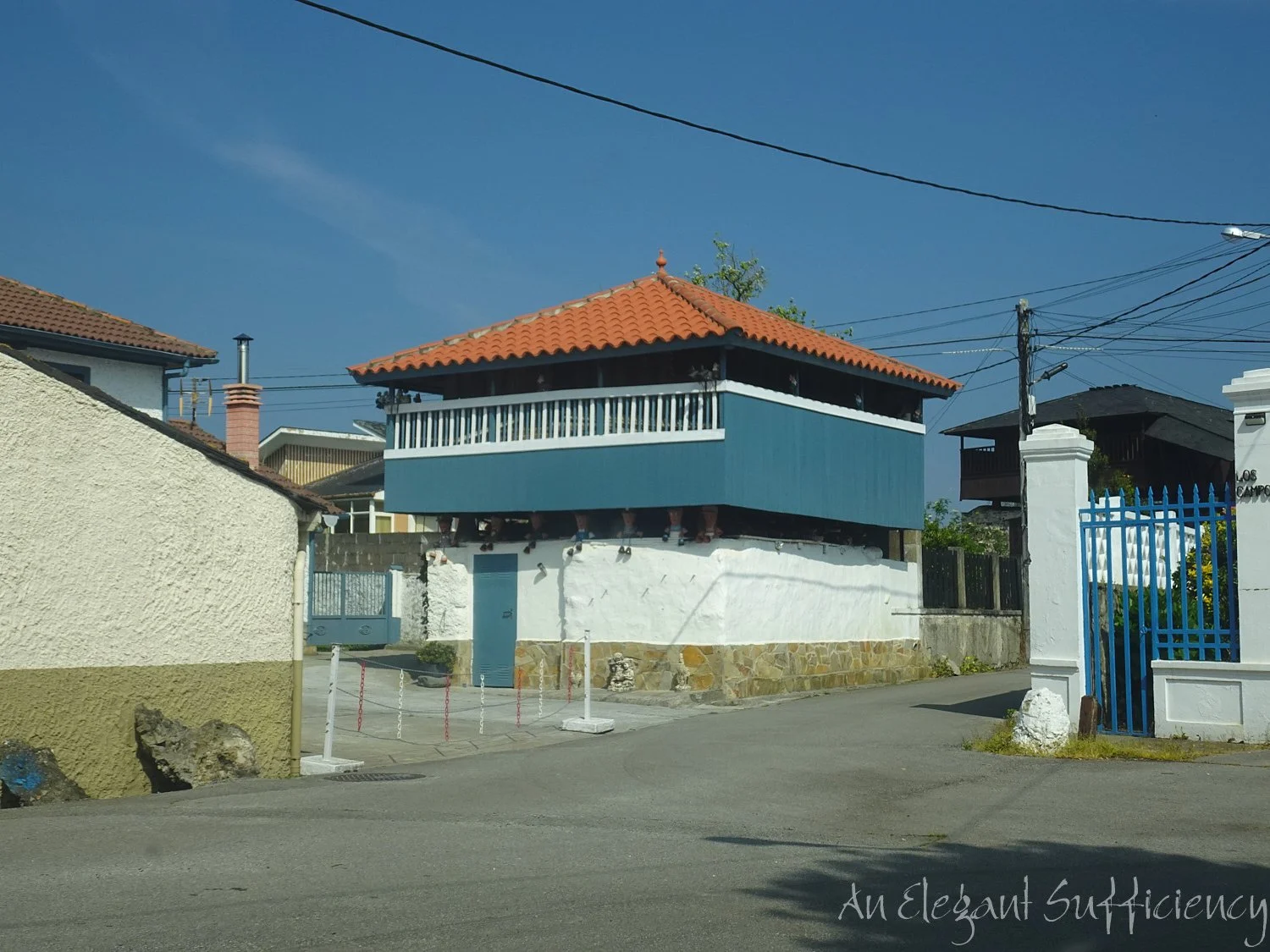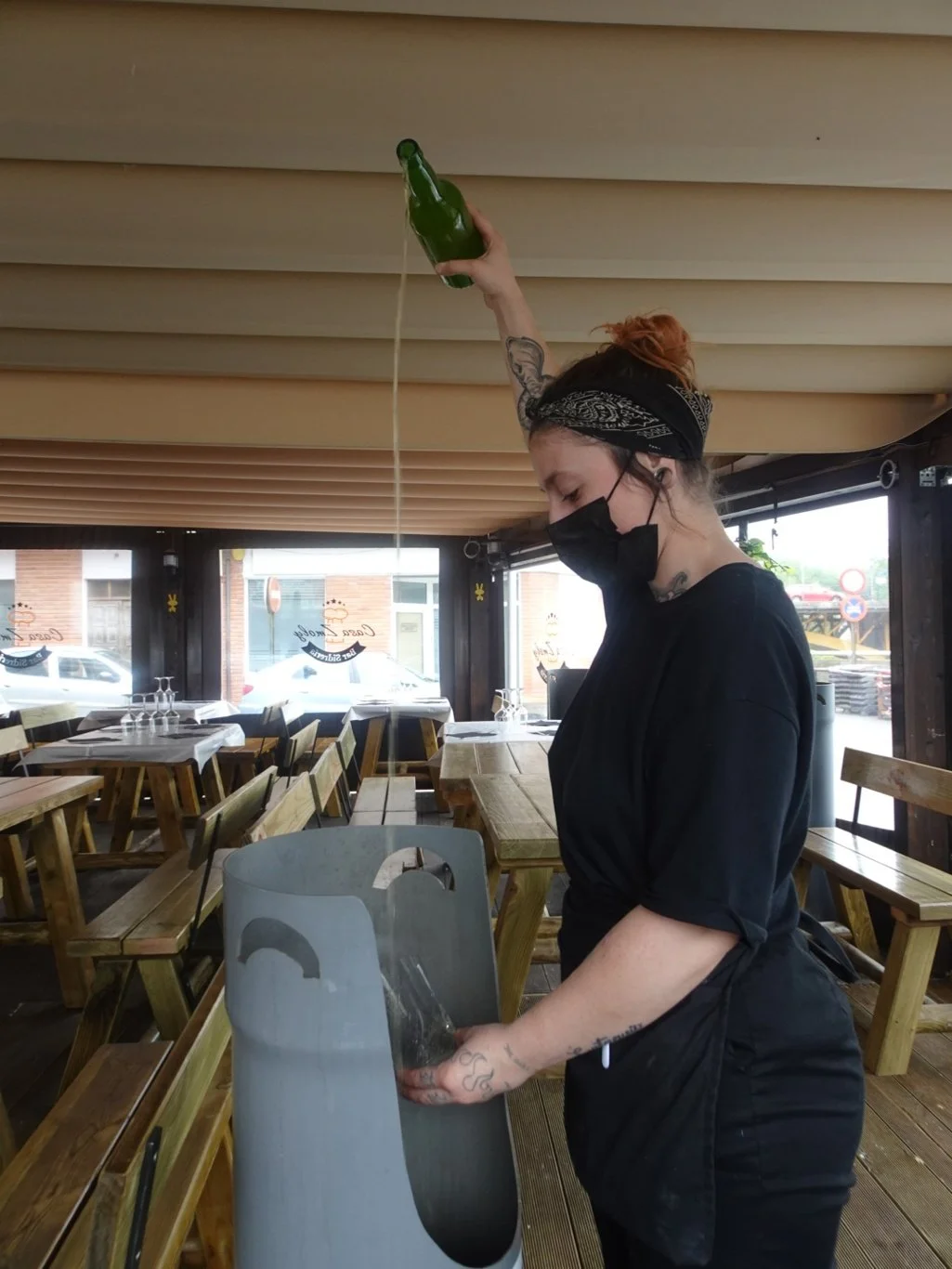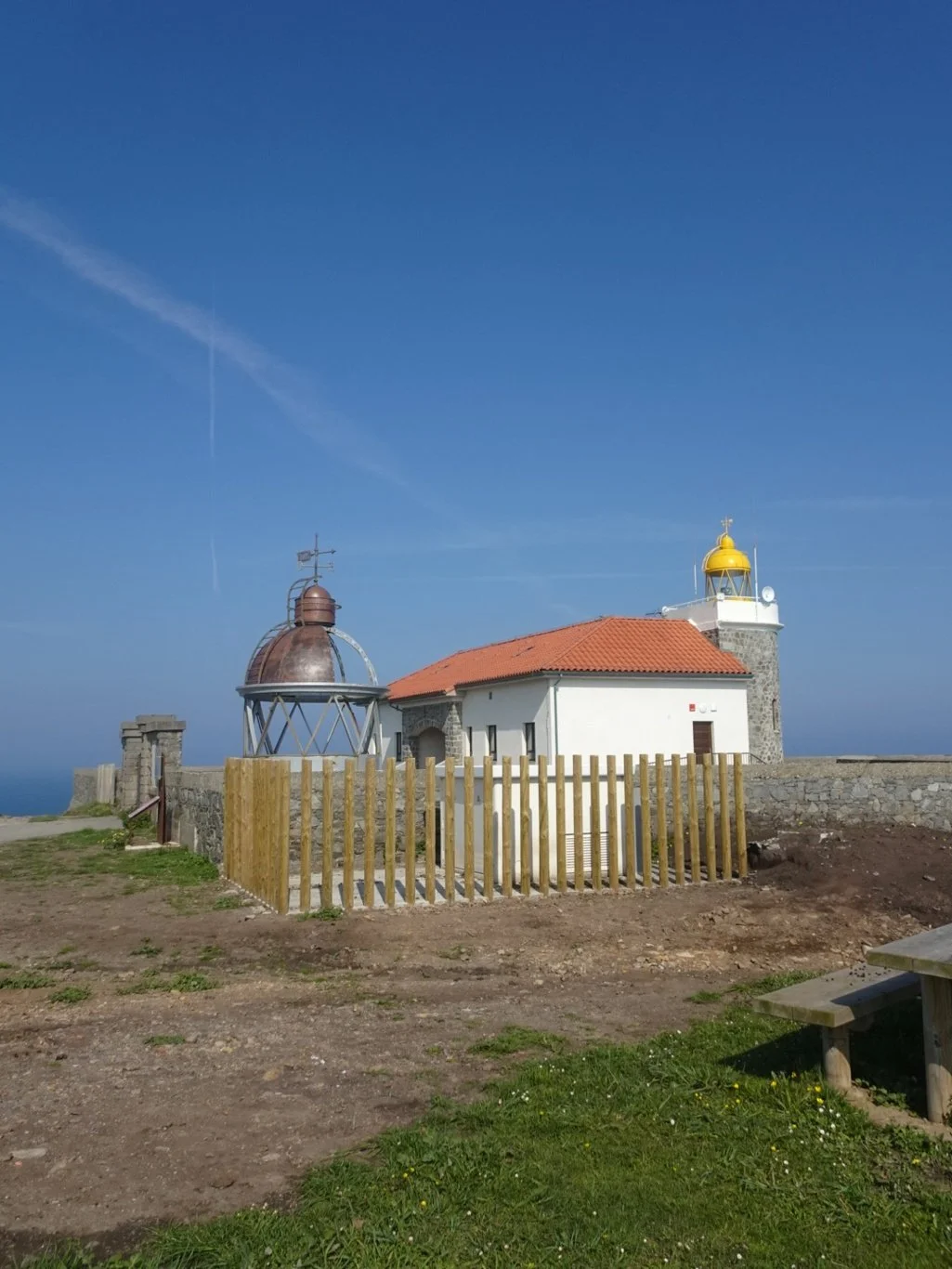Hórreos here and there
On one of our very first car journeys in Galicia I noticed some curious shed-like buildings in the gardens of houses we passed by. Their strange proportions made me wonder what were they and what was their purpose? I blogged about how we discovered the hórreos of Galicia here and went on to take a few more photos of those we saw whilst out and about.
We learned the basic principles from our guidebook; the elevated structure, the disks to prevent rodents accessing the grain stored inside and the slatted sides for ventilation. Since we’ve been at home, I’ve discovered more about the wide variations in style and felt really pleased to have spotted such an iconic feature early in our Galician travels.
We continued to spot the hórreos here and there, moving on into Asturias a few days later where we passed by a familiar - but different - variation. We were past it in a flash, but I snapped a picture and wondered if Asturian hórreos were square in shape?
Catching sight of a better example a few miles along the road, it would appear so. That beautiful square pitched roof too - whilst not quite as distinctive as their Galician cousins, these Asturian hórreos were just as fascinating and seemed to fit in well with the domestic architecture too.
Occasionally, we’d come across something that appeared to have utilised the structure and proportions of a(n?) hórreo to create a building with a different purpose. I’m not sure that this example is quite the agricultural hórreo we’ve been seeing so far. It all looks rather more kempt.
This one also appeared more carefully structured, or perhaps it had merely been boxed in underneath for more secure storage?
Asturian hórreos provided plenty of interesting variations too and my camera continued to be held at the ready for the next one along the way.
And then we came to Bermiego. Beyond the bears, we came across a beautiful village that just happened to have 32 hórreos, in a spectacular setting too.
Walking amongst them, we had the opportunity to look closely at these grand old masterpieces, each one with some unique characteristic and totally unspoiled by modern intervention.
We loved the simple but very effective structure that held everything together for who knows how many years. What weight must be supported by those pegallos (legs/pillars)?
My Hero noticed this hook-shaped piece of timber holding up a gnarled old plank to the side of a particularly ancient-looking hórreo.
I think it was the make do and mend nature of any adjustments that had been made which attracted us most of all!
I think it was noticing details like this nifty bit of construction that drew our attention to…
this!
And this…
Oh my.
There’s so much detail to discover and appreciate and we have just a couple of hours in the late afternoon.
We loved having the opportunity to simply wander about, looking at some of this fabulous craftsmanship.
Had it not been so late in the day, had we not got a fairly tricky drive back down the mountain and over the pass back to Oviedo ahead of us and had we not just seen the most amazing collection of hórreos imaginable, we might have stopped at Bueño where there can be found a similar collection of fifty or so fine examples. But you know what? There is such a thing as an elegant sufficiency of hórreos too!! However, I also discovered that in Bueno, there is also the Centro de Interpretacion del Horreo too. Open only on weekends, it’s probably just as well we didn’t make plans for a visit on the Wednesday afternoon we happened to be there.
Something for next time!
As we drove to A Coruña a few days later, we came across this and several similar interpretations on the theme in some coastal villages.
Maybe it’s a holiday hórreo?








